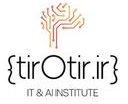Discover how to build a powerful LLM user feedback loop with Nebuly, optimizing AI interactions and driving continuous improvement.
دسته: other
IBM & Oracle debut watsonx agentic AI on OCIIBM & Oracle debut watsonx agentic AI on OCI
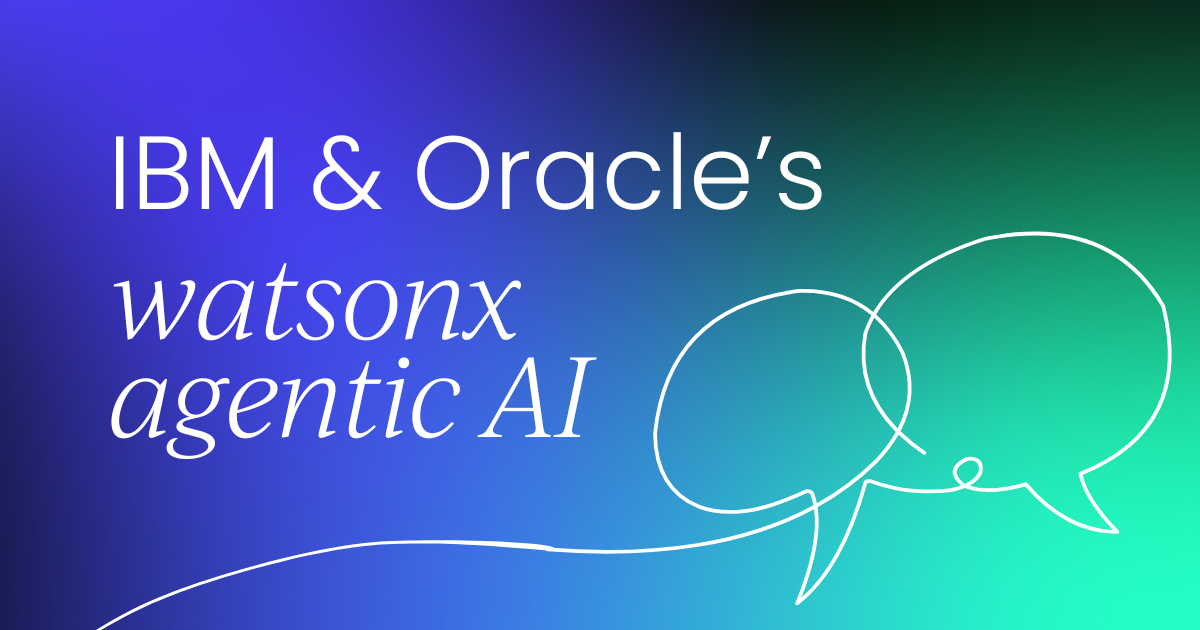
Unlike traditional AI systems that rely on step-by-step human input, agentic AI represents the next evolution: autonomous agents capable of ingesting information, executing tasks, and independently delivering end-to-end outcomes.
These agents can undertake multistep processes, linking APIs, databases, and workflows, to tackle complex problems without constant oversight. As businesses aim to streamline operations and cut down on manual bottlenecks, agentic AI signals a shift from human-in-the-loop to human-on-the-loop management.
IBM and Oracle’s relationship stretches back years, with joint efforts to optimize middleware, databases, and cloud services. Their agentic AI partnership builds on prior collaborations, such as the 2018 integration of IBM Cloud with Oracle’s database services. It reflects a mutual strategy to deliver enterprise‑grade AI tools at scale. By pooling IBM’s AI research and Oracle’s cloud infrastructure, they can offer customers seamless, cloud‑native workflows that span both vendors’ ecosystems.
watsonx Orchestrate: Automating workflows
On May 6, 2025, IBM and Oracle unveiled a significant expansion of their alliance: IBM’s watsonx AI portfolio, including watsonx Orchestrate and the new Granite AI models, will be directly available on Oracle Cloud Infrastructure (OCI).
Unlike point solutions, these tools are deeply embedded in OCI’s core services, allowing agents to run natively alongside data and apps—no extra pipelines or connectors needed.
At the heart of this expansion is watsonx Orchestrate, a drag‑and‑drop interface for building AI agents. Users can configure agents to perform tasks like data extraction, reconciliation, and approval routing by simply arranging modular “action blocks.” These blocks invoke pretrained models or custom scripts, then hand off outputs to the next step: creating a no‑code pipeline that frees business users from writing scripts or managing cloud resources.
Complementing Orchestrate are the Granite AI models, pretrained on industry‑specific datasets for finance, supply chain, and customer service sectors. By offering models tailored to common enterprise use cases, IBM and Oracle reduce the time and expertise needed to fine‑tune agents. Organizations can deploy a Granite model for invoice processing or customer‑support triage out of the box, then further customize it with proprietary data.
OCI: Built for agentic AI
IBM’s CEO, Arvind Krishna, set the tone at THINK 2025 when he declared that “the era of AI experimentation is over,” signaling a shift toward production‑ready AI agents that deliver measurable business outcomes. Analysts note enterprise customers increasingly demand turnkey, autonomous workflows rather than proof‑of‑concept demos.
Meanwhile, technology partners are already preparing for this evolution. At the same event, IBM highlighted its integration of webMethods Hybrid Integration, designed to “replace rigid workflows with intelligent, agent‑driven automation” across apps, APIs, and file transfers in a hybrid cloud environment.
Running agentic AI tools natively on OCI delivers several benefits:
- Reduced latency: Agents access data stored in OCI without egress fees or cross‑cloud hops.
- Scalability: OCI’s elastic infrastructure dynamically allocates resources as agents spin up or idle.
- Simplified management: Centralized monitoring and billing within OCI avoid the friction of multicloud administration.
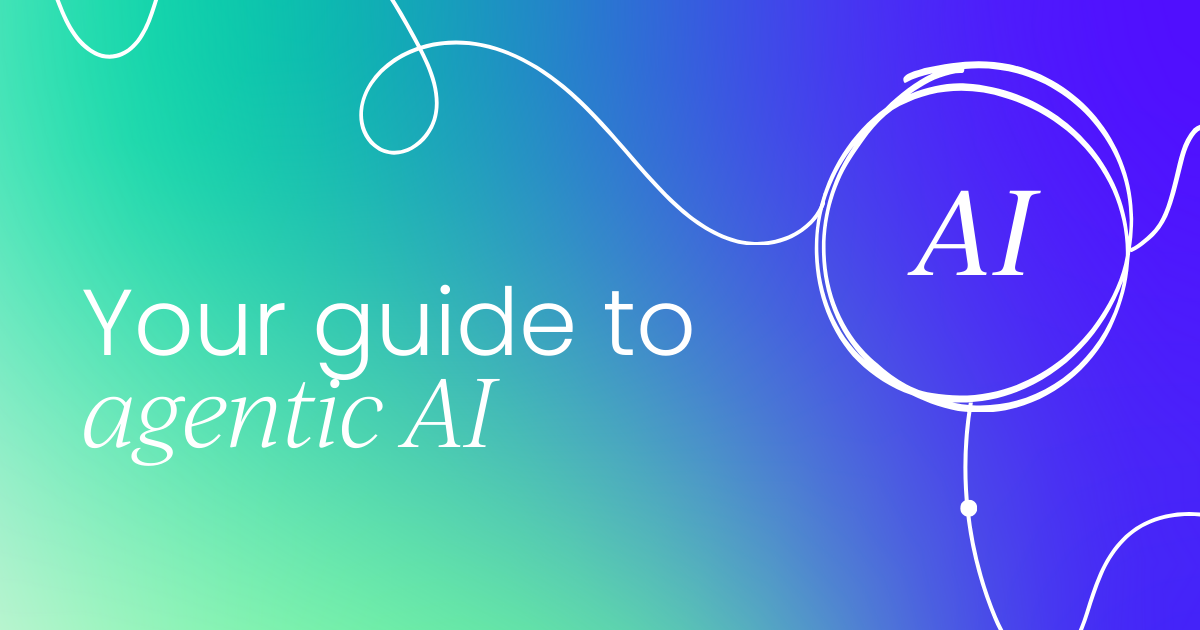
Security and governance
A key selling point is unified governance. By keeping agentic processes within OCI’s security perimeter, enterprises gain:
- Audit trails: Every agent action is logged, ensuring traceability for compliance and forensic analysis.
- Access controls: Role‑based permissions limit which data sources or systems an agent can touch.
- Encryption and key management: OCI’s built‑in services manage encryption keys, reducing operational overhead.
Real‑world use cases
IBM and Oracle designed Orchestrate for both citizen developers and IT professionals. Prebuilt templates for common tasks, such as “Process Purchase Orders” or “Resolve Support Tickets”, enable rapid adoption. For more technical teams, APIs and SDKs allow embedding agentic functions into custom applications. This dual approach democratizes AI automation, letting frontline employees build solutions while keeping advanced customization in the hands of developers.
- Finance: Agents reconcile transactions across ERP systems, flag anomalies, and generate reports, cutting close‑of‑month times by up to 40 percent.
- Supply chain: Agents monitor inventory levels, predict stockouts, and automatically reorder supplies when thresholds are crossed.
- Customer service: Agents triage incoming tickets, draft responses, and escalate to specialists on complex issues, all within an enterprise service‑desk platform.
While Oracle and IBM take a joint approach, competitors are also racing to offer agentic AI. AWS Bedrock recently added “Agents” capabilities, and Microsoft Azure is integrating autonomous workflows into Power Automate. However, the IBM–Oracle deal stands out by uniting two major enterprise vendors and offering pretrained, domain‑aware models alongside low‑code orchestration tools in one cloud.
Trends and challenges
As agentic AI matures, we expect:
- Cross‑cloud agents: Tools to manage agents that operate seamlessly across OCI, AWS, Azure, and on‑premises data centers.
- Vertical AI catalogs: Expanded Granite‑style model libraries for healthcare, manufacturing, and legal.
- Standardized governance: Industry frameworks to certify the safety, ethics, and compliance of autonomous agents.
However, challenges remain. Data privacy regulations may limit the scope of autonomous decisions. Organizations must guard against over‑automation, ensuring human oversight where necessary. Technical hurdles, such as integrating legacy systems, can also slow rollout.
The expanded IBM–Oracle partnership marks a significant milestone toward autonomous enterprise AI. By embedding watsonx Orchestrate and Granite AI models directly into OCI, the two companies have created a unified platform for building, deploying, and governing agentic workflows at scale. For businesses and developers, this means faster time to value, robust security, and the freedom to build fast on a cloud they already trust.
As agentic AI evolves, organizations that move early will be best positioned to unlock real efficiency gains and stay ahead of the competition through true end-to-end automation.
Rewiring the internet: Commerce in the age of AI agentsRewiring the internet: Commerce in the age of AI agents
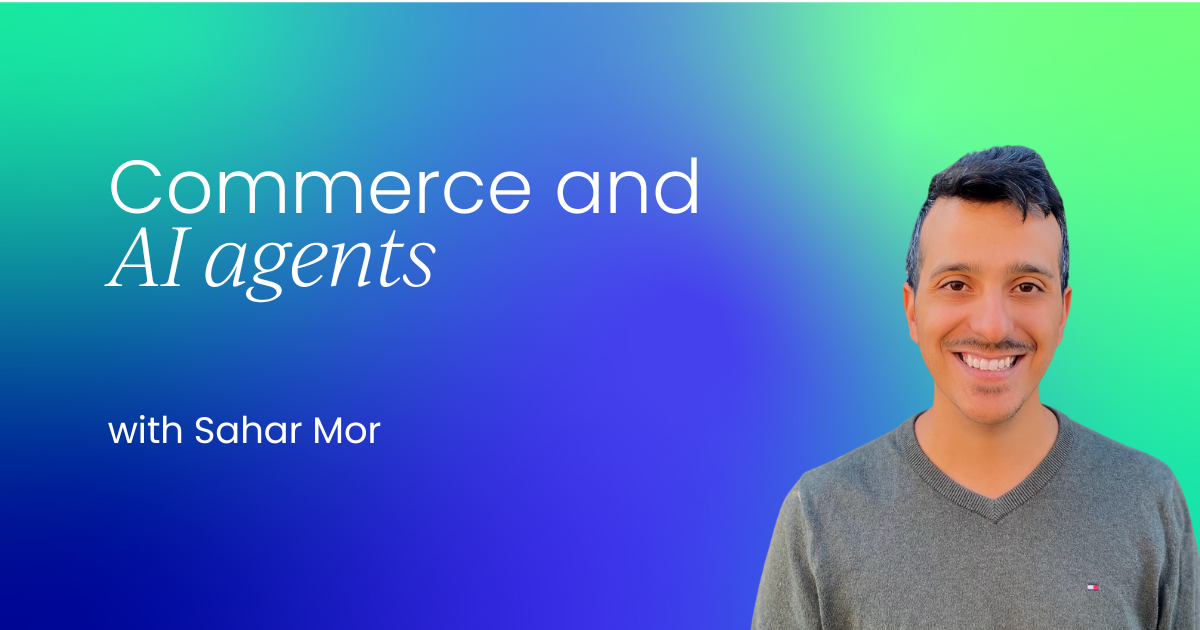
December 2028. Maria’s AI agent is negotiating simultaneously with twelve different vendors for her daughter’s upcoming birthday party.
Within minutes, it secured the perfect cake from a local bakery (after verifying their nut-free certification), booked an entertainer with stellar safety ratings, and coordinated custom goodie bags filled with each child’s favorite treats (after checking allergies and dietary restrictions with the other parents’ agents)—all while staying 15% under budget.
What would have taken Maria hours of calls, emails, and anxiety about vendor reliability now happens seamlessly through a web of agent-to-agent interactions powered by the new infrastructure explored in the previous post.
The revolution in web infrastructure we discussed in previous posts isn’t just theoretical—it’s enabling fundamental changes in how commerce, marketing, and customer service function. As agent passports and trust protocols become standardized, we’re witnessing the emergence of entirely new commercial paradigms.
With the recent release of Tasks by OpenAI, which equips ChatGPT—its consumer-facing AI—with the ability to perform tasks behind the scenes on behalf of users, it’s now easier than ever to envision a future where ChatGPT seamlessly navigates the web and handles complex operations for us.
![OPEN_AI_TASKS.mp4 [optimize output image] Rewiring the internet: Commerce in the age of AI agents](https://substackcdn.com/image/fetch/w_1456,c_limit,f_auto,q_auto:good,fl_lossy/https%3A%2F%2Fsubstack-post-media.s3.amazonaws.com%2Fpublic%2Fimages%2F6a77a4c1-97c1-430a-8118-03c229d35c6d_800x533.gif)
Today, we’ll explore how an agent-first internet will reshape domains like payments, marketing, support, and localization.
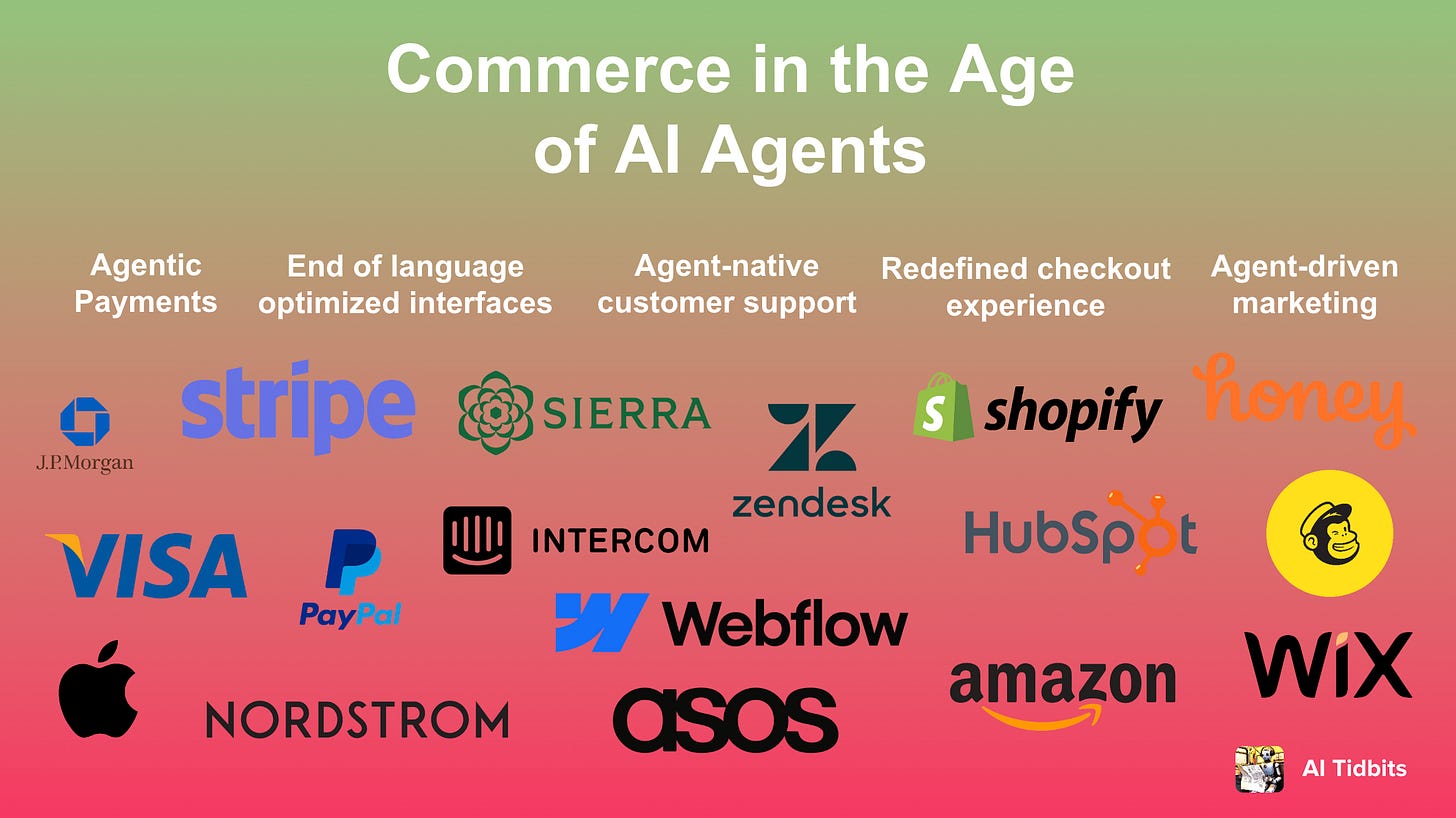
Agentic payments
Remember when online shopping first emerged, and entering your credit card details on a website felt risky? Card networks like Visa and Mastercard and banks like Chase and Barclays had to rapidly adapt to the digital realm, introducing new protocols like CVV codes and secure payment gateways to protect consumers and merchants alike. This evolution was pivotal in building trust and facilitating the e-commerce boom of the early 2000s, giving birth to digital payment giants like Stripe and PayPal.
This article was originally published here at AI Tidbits, where you can read more of Sahar’s fascinating perspectives on AI-related topics.
Similarly, the payment infrastructure that powers today’s internet was built around a simple dichotomy: card-present versus card-not-present transactions and the assumption that all payments are human-initiated.
The internet already faced a similar shift with the introduction of subscription payments in the early days of e-commerce, in which customers input their payment credentials once, allowing a merchant to charge them repeatedly in the future.
Recurring payments, now a dominant commerce mechanism projected to surpass $2.4T in spending by 2028, underscore how critical adaptive payment systems are to supporting global e-commerce. Yet, even more than a decade later, there are still countries like India that impose strict controls on recurring payments, highlighting the complexities of adapting systems to new paradigms.
But what happens when the legitimate transacting party isn’t human at all?
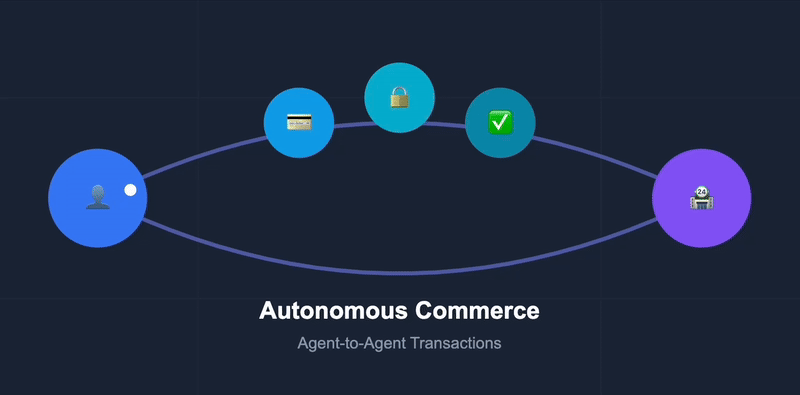
Digital payment systems are built around human users, employing measures like CVV codes and billing address verification to prevent fraud. These methods assume a human is initiating the transaction, making them ill-suited for autonomous agent transactions.
One major challenge is fraud detection and resolution—an area I intimately understand from my time as a PM at Stripe, where I worked closely with card issuers to develop sophisticated fraud prevention systems.
The current paradigm relies heavily on human behavioral patterns: typing speed, mouse movements, time spent reviewing checkout pages, and other signals that indicate legitimate human activity. But in an agent-driven world, these signals become obsolete.
During my time at Stripe, we saw how crucial these behavioral signals were for differentiating legitimate transactions from fraudulent ones. The shift to agent-driven commerce demands an entirely new approach. Rather than looking for signs of human behavior, we’ll need systems that verify agent legitimacy, authorization scope, and decision-making logic.
This shift raises critical questions for fraud prevention across banks (Chase, Barclays), card networks (Visa, Mastercard), and payment processors (Stripe, PayPal). For instance, how do you establish a chain of trust when an agent purchases on behalf of a user? How do you verify that an agent hasn’t been compromised or hijacked? These challenges require fundamentally rethinking our approach to transaction security and fraud prevention in an agent-driven ecosystem.
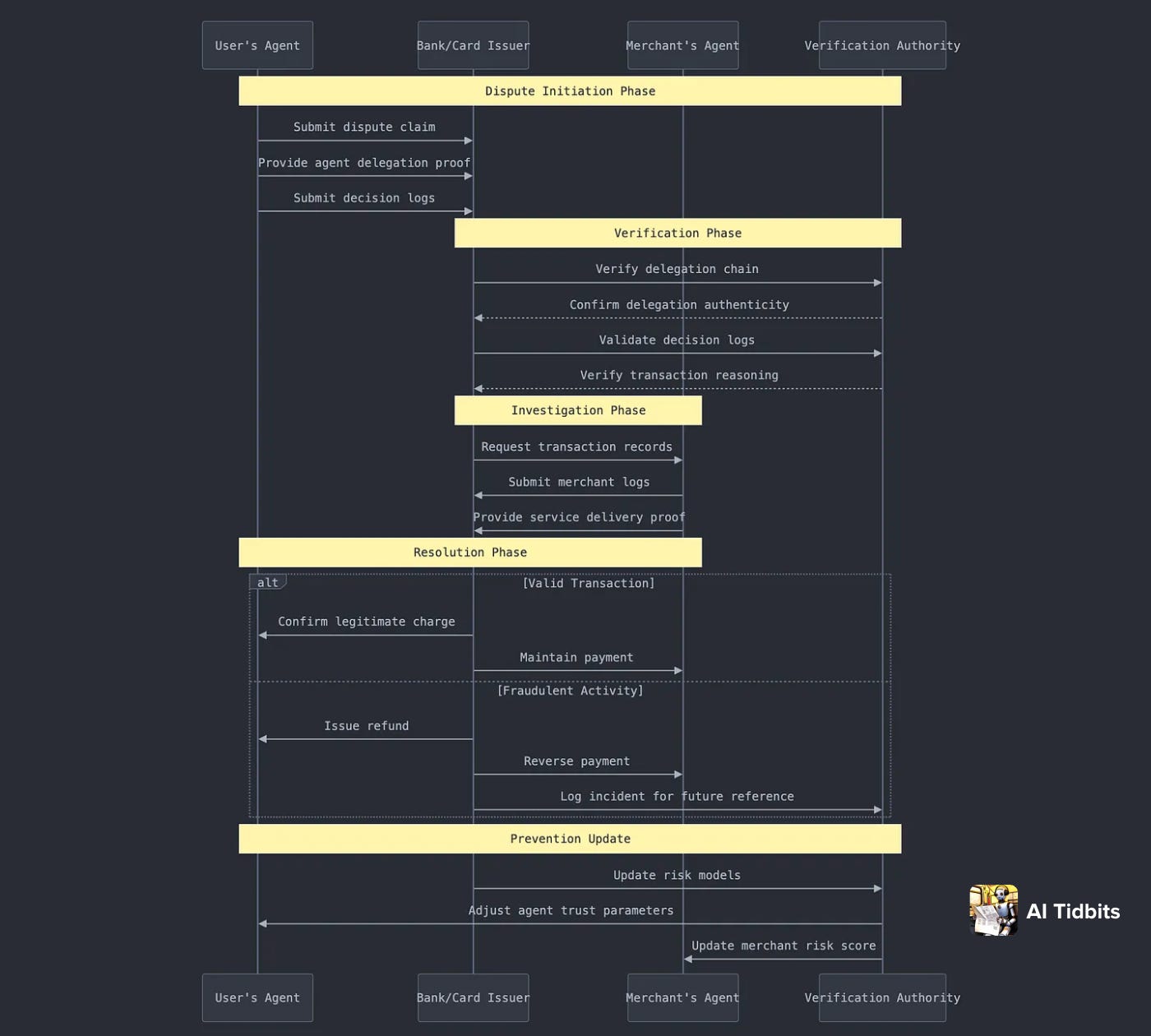
Future payment systems could introduce ‘agent wallets’ with granular spending controls, such as $100 limits for trusted merchants like Amazon and stricter caps for lesser-known websites. These wallets would integrate real-time fraud detection, submit cryptographic evidence for disputes, and maintain transparent, auditable records of agent actions tied to human authorization.
Visa could introduce an agent-specific flag to the existing payment protocols, indicating this payment was initiated autonomously, along with a trial of reasoning and actions leading to this payment. Meanwhile, Stripe might expand its SDKs to enforce programmable payment rules, ensuring alignment with user-delegated instructions (Stripe has already made its foray into Agentic payments with its recent SDK release).
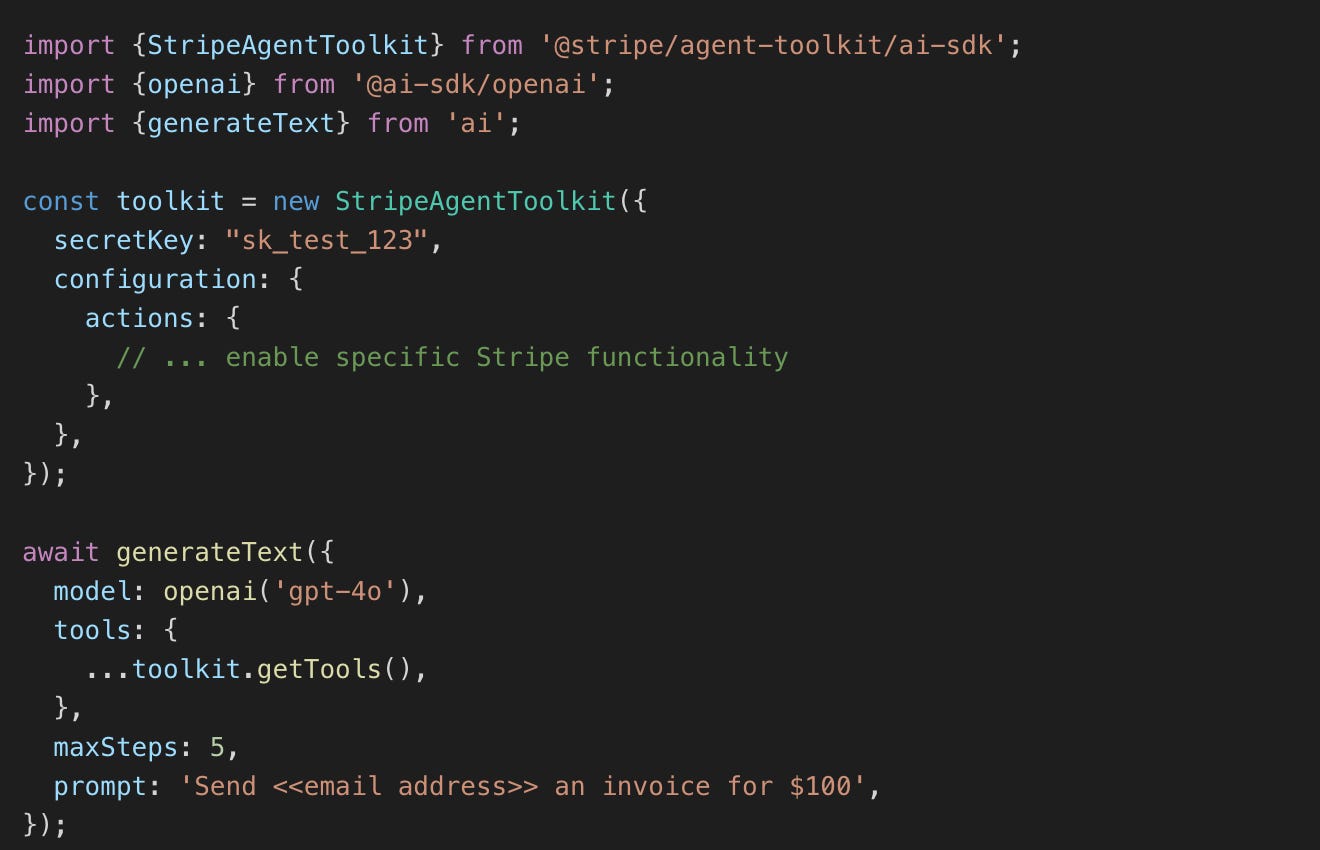
Beyond preventing fraud, agentic payments face fundamental economic and infrastructural challenges. The existing payment infrastructure wasn’t architected for the high-frequency, low-latency transactions that characterize agent interactions. Consider the standard pricing model of payment processors like Stripe: a 2.9% fee plus 30¢ per transaction.
While manageable for traditional e-commerce, this fee structure becomes prohibitively expensive when scaled to the myriad micro-transactions that agents might need to execute.
This pricing isn’t arbitrary—it reflects the complex web of stakeholders in the traditional payment chain. Card networks like Visa and issuers like Chase have built their business models around these transaction fees.
Interestingly, Stripe’s recent acquisition of Bridge, a stablecoin payment infrastructure provider, hints at a potential solution. By leveraging blockchain-based payment rails, companies could facilitate agent-to-agent transactions without incurring the expensive overhead of traditional payment networks.
This move suggests a growing recognition that the future of payments may require completely new infrastructure, optimized for the unique demands of autonomous agents.
Consider how a new payment protocol might work in practice. An “Agent Payment Protocol” (APP) could include:
- Delegation chain verification – a cryptographic proof chain showing the agent’s authorization to make specific types of purchases
- Transaction context object – machine-readable metadata including:
- Reasoning trail that led to the purchase decision
- Reference to specific user preferences/rules that were satisfied
- Confidence score for the decision
- Category-specific limits (e.g., $200 for groceries, $50 for entertainment)
- Merchant-specific trust scores
- Required human confirmation above certain thresholds
Smart spending controls with programmable constraints like:
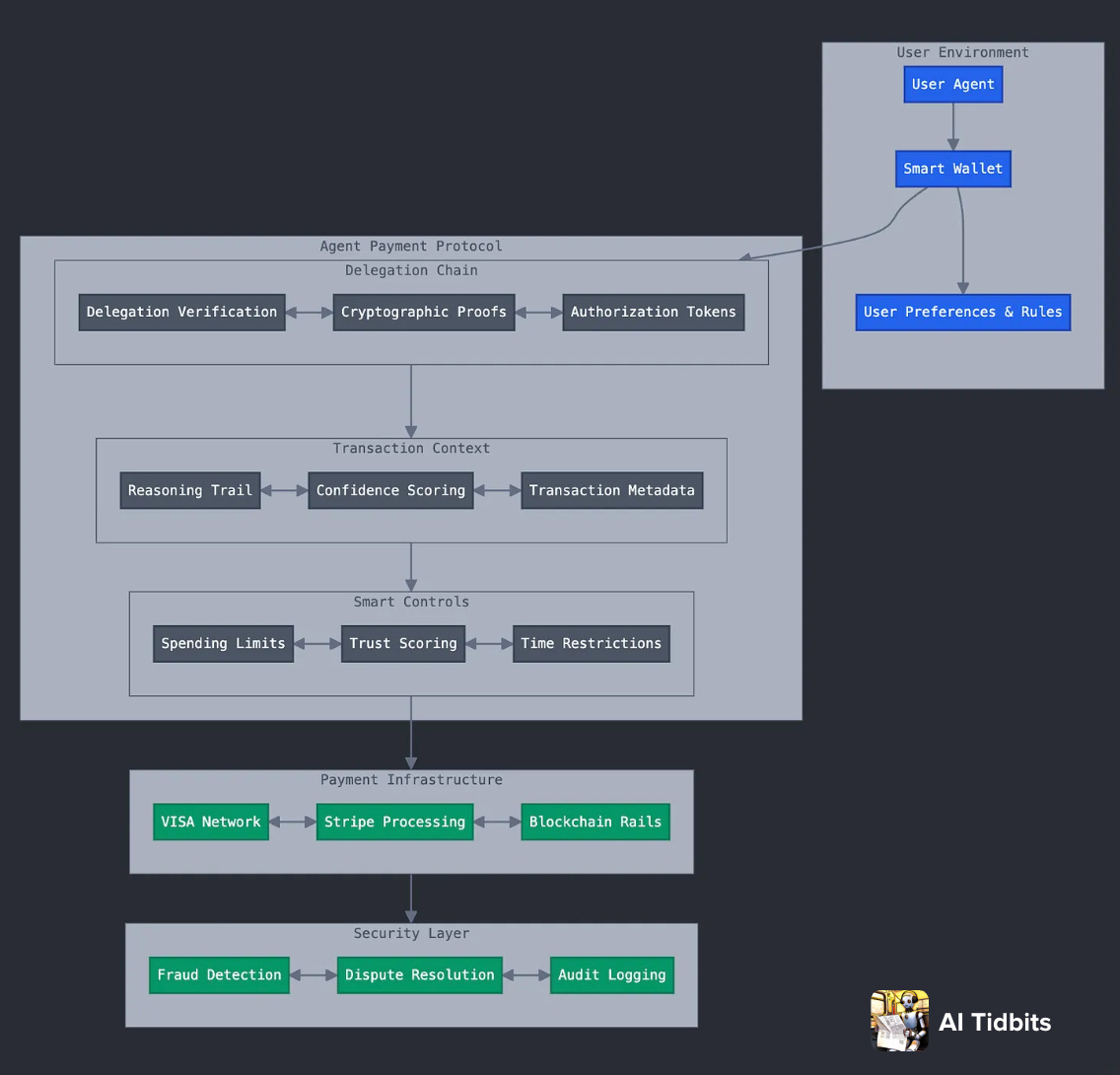
Major payment providers could implement this through extensions to existing standards. For instance, Visa’s existing 3D Secure protocol could add an agent verification layer, while Stripe’s API could introduce new parameters for agent-specific transaction metadata.
While payment infrastructure provides the foundation for agent-driven commerce, the very nature of how we complete transactions must also evolve. The familiar checkout process—a hallmark of e-commerce for decades—is about to undergo its own transformation.
Redefined checkout experience
In an agent-first environment, the concept of a traditional checkout—where a human user confirms their purchase by clicking a “Buy” button—fades into the background.
Instead, agents operate with predefined goals and parameters, continuously evaluating whether a proposed transaction aligns with those objectives. Rather than halting everything at a payment prompt, agents could integrate a “stop and reflect” step into their workflows.
For example, if a user’s agent is tasked with booking a flight seat that’s both a window seat and close to an exit, the agent pauses before completing the reservation. It double-checks that the seat assignment matches the user’s criteria and only then proceeds, ensuring flawless execution of the user’s intent and mitigating the probability of the agent going off the rails due to hallucinations.
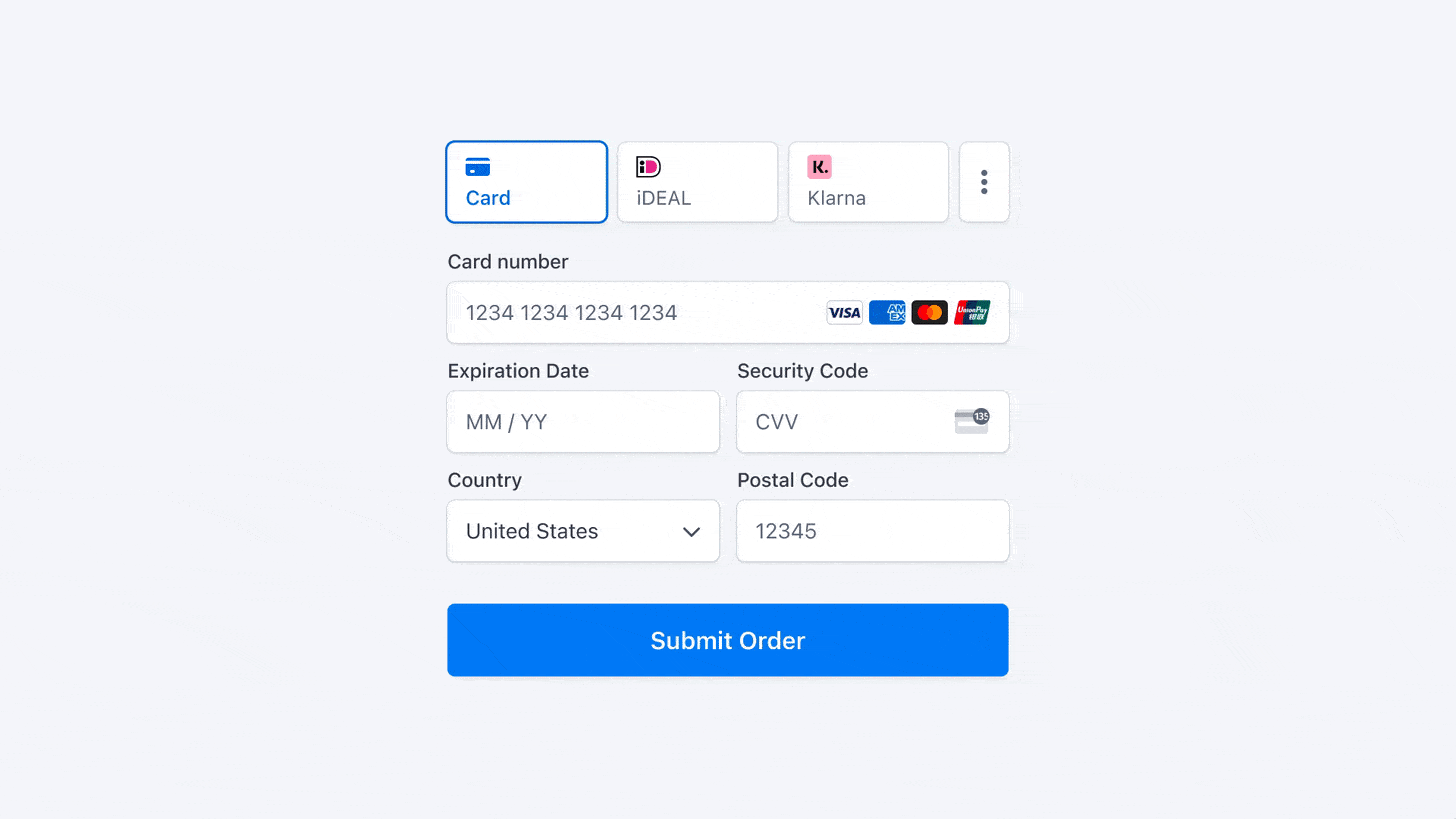
This reflective process transforms the final authorization into a subtle verification loop rather than a jarring user interruption. The agent reviews the selected attributes—price, seat location, baggage allowance, and cancellation policy—and compares them against the user’s stored preferences and constraints.
It confirms not only that the requested outcome has been met but also that it falls within acceptable spending limits and trust parameters. This transforms purchasing from a manual “Are you sure?” prompt into a nuanced, data-driven decision matrix.
As these agent-mediated transactions proliferate, payment providers and merchants might offer additional layers of context-aware validation. For instance, when an agent chooses a specific insurance add-on, the payment system could prompt the agent to confirm whether its logic correctly interpreted the user’s needs.
This transparent chain of reasoning, visible to the agent and logged for future reference, ensures that each transaction stands up to scrutiny. Ultimately, the checkout step evolves from a user-facing choke point to an agent-managed quality control measure, minimizing errors and elevating the overall integrity of automated commerce.
As agents reshape how we complete purchases, they’re also forcing us to rethink how businesses attract and engage customers in the first place. The era of human-centric marketing campaigns is giving way to something far more systematic and efficient.
Agent-driven marketing and promotions
Marketing campaigns and promotions will evolve radically in an AI agent-mediated economy.
Traditional email marketing and coupon distribution systems, designed around human attention and impulse, will give way to programmatic offer networks where consumers’ AI agents maintain persistent queries about their principals’ needs and preferences. These agents subscribe to vendor APIs that broadcast real-time offers matching specific criteria, enabling hyper-personalized deal discovery that transcends the limitations of batch email campaigns.
Vendors might maintain agent-first promotional channels that communicate in structured data formats, allowing instant price comparison and benefit analysis. This ecosystem could enable “intent casting”, where agents broadcast shopping goals to trusted vendor networks, receiving precisely targeted offers that align with the principal’s timing, budget, and preferences—all without cluttering a human inbox or requiring manual coupon management.
Consider a practical example: A user instructs their agent to monitor high-end fashion retailers for specific items within their style preferences and budget constraints. Rather than the user repeatedly checking websites or subscribing to countless email lists, their agent maintains persistent monitoring across multiple vendors:
- Real-time inventory tracking across size, color, and style variations
- Dynamic price monitoring, including flash sales and member-exclusive discounts
- Evaluation of shipping times and costs to the user’s location
When ideal conditions align—perhaps a preferred sweater hits the target price point during an end-of-season sale—the agent can either notify the user or execute the purchase automatically based on pre-authorized parameters. This transforms shopping from an attention-demanding activity into an efficient background process governed by clear rules and preferences.
Major retailers like Nordstrom or ASOS could expose agent-specific APIs that provide structured access to:
- Real-time inventory and pricing data
- Detailed product specifications and measurements
- Membership program benefits and restrictions
- Regional availability and shipping constraints
This evolution democratizes personal shopping, allowing everyone to benefit from persistent, intelligent monitoring of their fashion preferences, not just those who can afford human personal shoppers. It also enables retailers to better match inventory with actual customer intent, reducing overhead from unsold merchandise and improving supply chain efficiency.
Other companies like Honey may need to pivot to offer agent-optimized tools that integrate directly with vendor APIs, allowing agents to query real-time discounts and rewards. Similarly, Mailchimp and HubSpot could develop agent-oriented campaign frameworks that distribute offers as structured data streams rather than traditional email blasts, ensuring seamless integration with agent-driven workflows.
Agent-native customer support
Customer support today centers on human interactions or user-facing chatbots. In an agent-first paradigm, this shifts to agent-to-agent communication. Personalized AI agents will directly engage with business systems to resolve issues, retrieve shipping or refund policies, or autonomously initiate returns. This evolution will streamline processes, reduce human intervention, and enhance efficiency in support workflows.
In an agent-first paradigm, customer support is no longer solely about human users contacting businesses through chat widgets or call centers. Instead, autonomous agents interact directly with enterprise systems, pulling diagnostic information, requesting refunds, or escalating complex issues to a more constrained/expensive resource like a human or a superior model (e.g., o1 over GPT-4o).
This shift encourages platforms like Intercom to develop agent-oriented communication layers—specialized APIs that allow autonomous agents to navigate support options, retrieve knowledge base articles, and submit detailed troubleshooting requests without human intervention.
These agent-facing APIs would streamline issue resolution, allowing routine queries, such as package tracking, account verification, or policy clarifications, to be handled agent-to-agent, drastically reducing response times.
As soon as a problem arises, the user’s agent can pinpoint the issue and connect with the business’s support agent (be it a specialized LLM or a human representative), negotiating resolutions or applying discounts as needed. The result is a fluid, automated dialogue that bypasses human frustration and latency.
Over time, companies could implement reputation scoring systems that measure how efficiently their support agents (both human and AI) interact with consumer agents. Metrics like resolution speed, policy clarity, and refund accuracy become machine-readable signals, informing user agents which vendors offer superior support experiences.
As more vendors embrace these standards, the entire support ecosystem evolves: prompt, well-structured responses become the norm, and agent-native customer support becomes a hallmark of high-quality digital services.
Imagine a complex warranty claim scenario: Your agent detects that your new laptop’s battery is degrading unusually fast. It immediately:
- Collects diagnostic data and usage patterns
- Cross-references warranty terms with actual performance
- Initiates a support interaction with the manufacturer’s agent
- Negotiates a resolution based on precedent cases
- Arranges shipping for replacement parts or full device replacement
- Schedules a technician visit if needed
This entire process happens without human intervention unless exceptional circumstances arise. The interaction generates a complete audit trail, including all diagnostic data, communication logs, and decision points—valuable data for improving both product quality and support processes.
One example in this space of agentic customer support is Sierra, a startup taking aim at the expansive market of customer support by embedding AI agents into business workflows.
Their conversational agents handle complex queries with contextual precision, managing tasks such as processing returns or updating subscriptions. While their primary focus remains on serving human customers, the foundation they’ve built is clearly aligned with an AI agent-driven future.
With access to company policies (e.g., refund and shipping rules) and robust conversational AI infrastructure (spanning LLMs and voice interfaces), Sierra is well-positioned to seamlessly transition to support agent-to-agent interactions as demand evolves.
![temp (25).mp4 [optimize output image] Rewiring the internet: Commerce in the age of AI agents](https://substackcdn.com/image/fetch/w_1456,c_limit,f_auto,q_auto:good,fl_lossy/https%3A%2F%2Fsubstack-post-media.s3.amazonaws.com%2Fpublic%2Fimages%2Fbc196221-5e5c-47f3-80f3-b8c4312b632d_800x755.gif)
The end of language-optimized interfaces
As AI agents seamlessly translate and interpret information on the fly, the need for painstakingly maintained multilingual websites diminishes. Instead of forcing businesses to host separate English, French, or Mandarin versions of their interfaces, agents handle language conversion dynamically.
This capability allows brands to maintain a single, streamlined codebase while ensuring that users, regardless of location, receive content and instructions in their preferred language, instantly and accurately.
Website builders like Webflow and Wix could evolve into platforms that generate “universal templates” optimized for agent interpretation rather than human linguistic preferences. Instead of focusing on localized landing pages, these platforms would produce standardized, machine-readable structures enriched with metadata and semantic cues.
Agents, armed with cutting-edge language models, would then adapt the presentation layer for each user, including local dialects, cultural nuances, and even personalization cues drawn from the user’s profile.
The transformation goes beyond simple translation. Agents will handle complex cultural adaptations across multiple dimensions simultaneously. They’ll dynamically adjust pricing strategies for different markets while modifying product descriptions to reflect local preferences and purchasing patterns.
These agents will intelligently adapt imagery and design elements to ensure cultural appropriateness, automatically managing regional compliance requirements such as privacy policies or consumer protection disclosures. They’ll even personalize communication styles based on cultural norms, shifting between formal and casual tones and adapting messaging cadence to match local expectations.
This comprehensive cultural intelligence transforms what was once a labor-intensive localization process into a fluid, automated system that maintains cultural authenticity across all customer touchpoints.
In this new reality, the value proposition of website builders shifts from localization to robustness, structure, and data integrity. Rather than wrestling with manual translations or commissioning multiple language variants, businesses can rely on well-defined data schemas and agent-ready manifests. As a result, the concept of “language-optimized” sites becomes obsolete, replaced by fluid, dynamic interfaces that transcend linguistic barriers.
Small vs. large business impact
This transition creates both opportunities and challenges across the business spectrum. Large enterprises can invest in building sophisticated agent interfaces and maintaining complex agent-ready APIs. However, small businesses might initially struggle with the technical requirements and infrastructure costs.
To bridge this gap, we will likely see the emergence of “agent-enablement platforms”, services that help small businesses become agent-ready without significant technical investment.
Think of them as the Shopify of the agent era, providing standardized tools that level the playing field. These platforms would offer pre-built solutions for creating agent-readable product catalogs and managing automated pricing and inventory systems.
They would include standardized support protocols that small businesses can easily implement, along with simplified integration paths to agent payment systems. By democratizing access to agent-ready commerce capabilities, these platforms will play a crucial role in preventing a digital divide between large and small businesses in the agent economy.
This democratization of agent-ready commerce will be crucial for preventing a digital divide between large and small businesses in the agent economy.
The great rewiring
The transition to an agent-first internet represents more than just a technological shift—it’s a fundamental reimagining of how commerce functions in the digital age. We’re moving from a web optimized for human attention and interaction to one built for efficient, automated decision-making. This transformation touches every aspect of online business:
- Payment systems evolve from human-verification models to agent-oriented protocols with built-in delegation and accountability
- Marketing shifts from attention-grabbing campaigns to structured, machine-readable offer networks
- Customer support transforms from human-to-human interaction to efficient agent-to-agent problem resolution
- Language barriers dissolve as agent-mediated communication enables seamless global commerce
Companies that quickly adapt to this new paradigm—implementing agent passports, embracing agent-to-agent protocols, and restructuring their services for machine readability—will shape the next era of online interaction.
Just as the mobile revolution created trillion-dollar opportunities, the agent revolution opens new horizons for innovation and value creation. The businesses that thrive won’t just be those with the best products or prices, but those that best enable and embrace agent-driven commerce.
AI-driven admin analytics: Tackling complexity, compliance, and customizationAI-driven admin analytics: Tackling complexity, compliance, and customization

As productivity software evolves, the role of enterprise IT admins has become increasingly challenging.
Not only are they responsible for enabling employees to use these tools effectively, but they are also tasked with justifying costs, ensuring data security, and maintaining operational efficiency.
In my previous role as a Reporting and Analytics Product Manager, I collaborated with enterprise IT admins to understand their struggles and design solutions. This article explores the traditional pain points of admin reporting and highlights how AI-powered tools are revolutionizing this domain.
Key pain points in admin reporting
Through my research and engagement with enterprise IT admins, several recurring challenges surfaced:
- Manual, time-intensive processes: Admins often spent significant time collecting, aggregating, and validating data from fragmented sources. These manual tasks not only left little room for strategic planning but also led to frequent errors.
- Data complexity and compliance: The explosion of data, coupled with stringent regulatory requirements (e.g., GDPR, HIPAA), made ensuring data integrity and security a daunting task for many admins.
- Unpredictable user requests: Last-minute requests or emergent issues from end-users often disrupted admin workflows, adding stress and complexity to their already demanding roles.
- Limited insights for decision-making: Traditional reporting frameworks offered static, retrospective metrics with minimal foresight or actionable insights for proactive decision-making.

Building a workflow to solve reporting challenges
To address these pain points, I developed a workflow that automates data collection and improves overall reporting efficiency. Below is a comparison of traditional reporting workflows and an improved, AI-driven approach:
Traditional workflow:
- Data collection: Manually gathering data from different sources (e.g., logs, servers, cloud platforms).
- Data aggregation: Combining data into a report manually, often using Excel or custom scripts.
- Validation: Ensuring the accuracy and consistency of aggregated data.
- Report generation: Compiling and formatting the final report for stakeholders.
Improved workflow (AI-driven):
- Automation: Introducing AI tools to automate data collection, aggregation, and validation, which significantly reduces manual efforts and errors.
- Real-Time Insights: Integrating real-time data sources to provide up-to-date, actionable insights.
- Customization: Providing interactive dashboards for on-demand reporting, enabling admins to track key metrics and make data-driven decisions efficiently.
Evolution with AI capabilities: Market research insights
Several leading companies have successfully implemented AI to transform their admin reporting processes. Below are examples that highlight the future of admin reporting:
Microsoft 365 Copilot
Microsoft’s AI-powered Copilot integrates with its suite of apps to provide real-time data insights, trend forecasting, and interactive visualizations.
This proactive approach helps IT admins make data-driven decisions while automating manual processes. By forecasting trends and generating real-time reports, Copilot allows admins to manage resources and workloads more effectively.
Salesforce Einstein Analytics
Salesforce Einstein leverages advanced AI for predictive modeling, customer segmentation, and enhanced analytics.
Admins can forecast future trends based on historical data and create personalized reports that directly impact strategic decision-making. This enables actionable insights that were previously difficult to uncover manually.
Box AI agents
Box’s AI agents autonomously collect, analyze, and report data. These agents detect anomalies and generate detailed reports, freeing admins to focus on higher-priority tasks. By automating complex reporting processes, Box’s AI agents enhance both speed and accuracy in decision-making.
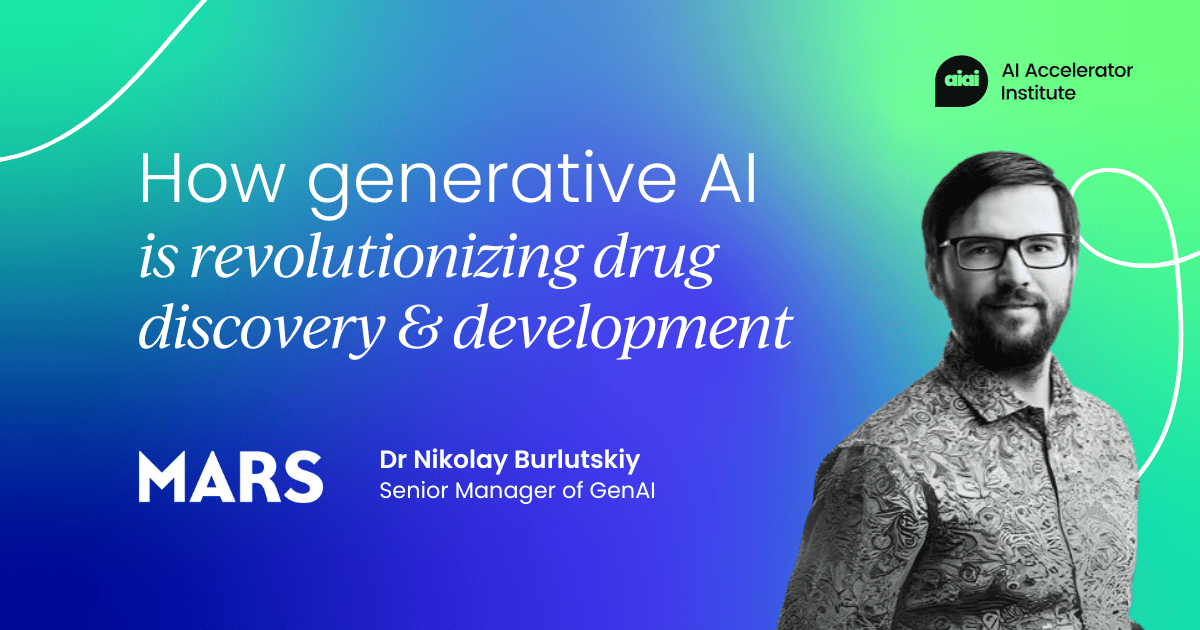
Future capabilities and opportunities
Looking ahead, several emerging capabilities can further unlock the potential of admin reporting:
- Seamless data integration: AI-powered tools enable organizations to unify data from disparate systems (e.g., cloud storage, internal databases, third-party applications), providing a holistic view of critical metrics and eliminating the need for manual consolidation.
- AI-powered decision support: Context-aware AI can offer personalized recommendations or automate complex workflows based on historical patterns and operational context, reducing manual intervention while enhancing accuracy.
- Automated compliance checks: AI tools can continuously monitor compliance with evolving regulations, automatically generating compliance reports to keep organizations secure and up-to-date.
- Security and performance monitoring: AI can detect unusual patterns in data, such as unexpected traffic spikes or system anomalies, allowing admins to proactively address potential security threats or failures before they escalate.
- Interactive dashboards and NLP: By incorporating natural language processing (NLP), AI tools enable admins to query data using plain language and receive intuitive, visual reports, streamlining analysis and enhancing user experience and usability.
Conclusion
The transformation of admin reporting from manual workflows to AI-driven insights has revolutionized IT operations. By automating routine tasks, delivering real-time insights, and enhancing predictive capabilities, AI empowers IT admins to focus on strategic initiatives while ensuring data accuracy and compliance.
As organizations continue to adopt advanced AI capabilities, the future of admin reporting holds exciting possibilities, from seamless data integration to adaptive, context-aware decision-making tools.
These innovations will not only enhance efficiency but also enable organizations to thrive in an increasingly complex, data-driven world.
Optimizing LLM performance and output qualityOptimizing LLM performance and output quality

The session from Srinath Godavarthi, Director, Divisional Architect at Capital One, focuses on enhancing outcomes for customers and businesses by optimizing generative AI’s performance and output quality.
It highlights the importance of foundation models, their challenges, and the variability in output quality, including issues like hallucinations caused by noisy training data.
The discussion covers four main strategies for improving model performance: prompt engineering, retrieval-augmented generation (RAG), fine-tuning, and building models from scratch.
Each method has its advantages, with prompt engineering offering quick improvements and fine-tuning providing specialized adaptations for specific tasks. Ultimately, the choice of strategy depends on the use case and the complexity involved.
Become a Pro member today and get access to all sessions from Generative AI Summit Washington, alongside our entire world series.
That’s hundreds of hours of insights straight from some of the world’s top AI leaders.
How AI is transforming financial modeling & sales forecasting in enterprise techHow AI is transforming financial modeling & sales forecasting in enterprise tech
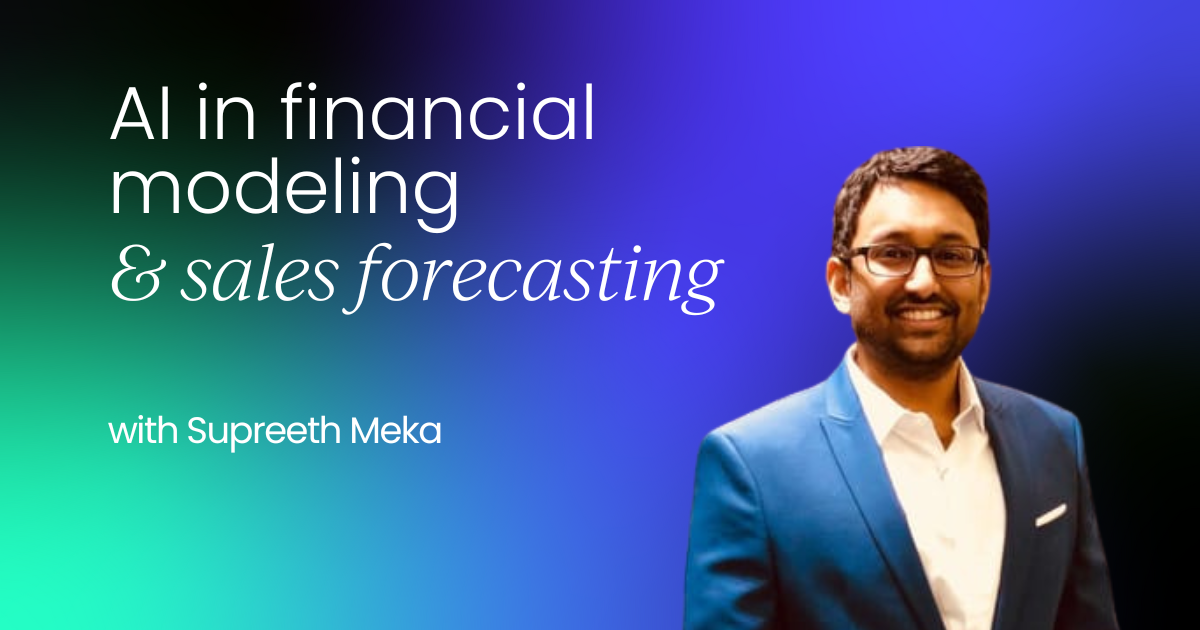
AI is emerging as a key differentiator in enterprise finance. As traditional financial models struggle to keep up with the pace of change, enterprise tech organizations are turning to AI to unlock faster, more accurate, and insight-driven decision-making.
Drawing from my experience in sales planning and forecasting in the enterprise tech sector, I’ve seen firsthand how AI is reshaping how global enterprises forecast revenue, optimize GTM strategies, and manage P&L risk.
This article explores how AI is transforming financial modeling and sales forecasting (two pillars of enterprise strategy) and helping finance teams shift from reactive to proactive operations.
1. Why traditional forecasting falls short
There are three main reasons why traditional forecasting is falling short:
Lack of broader business context
Sales forecasters and financial modelers frequently lack visibility into wider organizational shifts such as changes in product strategy, marketing campaigns, or operational execution that affect demand and performance. This makes it difficult to fine-tune models for niche business dynamics or rapidly changing market conditions.
Inflexibility
They often have an inability to account for real-time changes in demand, market shifts, economic conditions, tariffs, or sales performance.
Human bias
Over-reliance on gut-feel projections leads to inaccurate financial planning.
In many enterprise settings, these limitations create friction between planning and execution across business functions, finance, sales, and marketing. Misaligned forecasts result in delayed strategic actions and misused resources, which are issues that AI is now well-positioned to solve.
2. What makes AI a game-changer for financial modeling
Cross-functional simulations tailored by domain experts
One of AI’s most transformative strengths lies in its ability to empower every function within the enterprise to personalize simulations using their domain-specific expertise. For example:
- The pricing team can continuously adjust models based on real-time strategy updates.
- The product team can simulate outcomes tied to roadmap changes or launch timing.
- The marketing team can incorporate variable lead generation budgets or campaign performance assumptions.
Likewise, GTM leaders can simulate how scaling inside sales headcount could drive more transactional business and enhance margins. These deeply integrated, cross-functional simulations not only improve forecast precision but also drive strategic alignment and execution agility across the business.
Real-time forecast adjustments
Unlike static quarterly models, AI allows finance leaders to refresh forecasts dynamically, giving real-time visibility into revenue performance. This is particularly useful in fast-evolving segments like AI infrastructure, where product cycles and demand signals change rapidly.
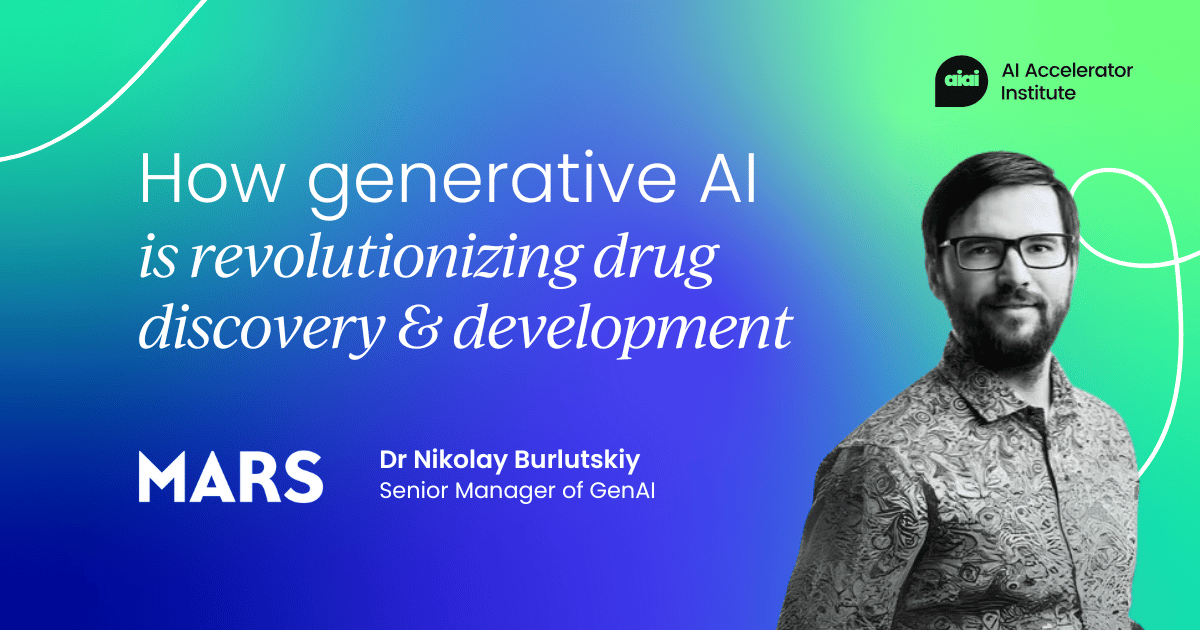
3. Practical use cases in enterprise finance
AI-powered lead scoring & targeting
Inspired by the Lean Startup’s ‘Build-Measure-Learn’ cycle, one effective AI use case is building a lean, predictive lead scoring model.
Organizations can:
- Develop an initial AI model based on historical data to identify high-probability buyers.
- Continuously refine lead targeting with real-time behavioral and market data.
- Deploy a pilot program with a focused sales team to test and validate the model’s effectiveness.
- Measure conversion rates, learn from outcomes, and iterate the scoring logic.
Smart bundling & pricing optimization
Following lead scoring, enterprises can create value by applying AI to product bundling and pricing strategies. This includes:
- Building AI-driven recommendations for optimal hardware/software bundles based on customer profiles.
- Integrating dynamic pricing capabilities that react to competitor behavior and market demand.
- Running A/B pricing tests within specific customer segments to evaluate effectiveness.
- Collecting feedback from sales teams to iteratively enhance pricing logic and usability.
Automated revenue forecasting
Another valuable use case involves enhancing revenue visibility and predictability. Organizations can:
- Better predict conversion rates for large strategic deals and transactional segments, enabling more reliable revenue planning across deal sizes.
- Forecast transactional business growth patterns tied to seasonal cycles, marketing triggers, or high-velocity sales channels.
- Continuously refine revenue projections by integrating demand signals, channel performance, and seasonality.
- Establish feedback loops between finance and GTM teams to adjust models based on real-world performance.
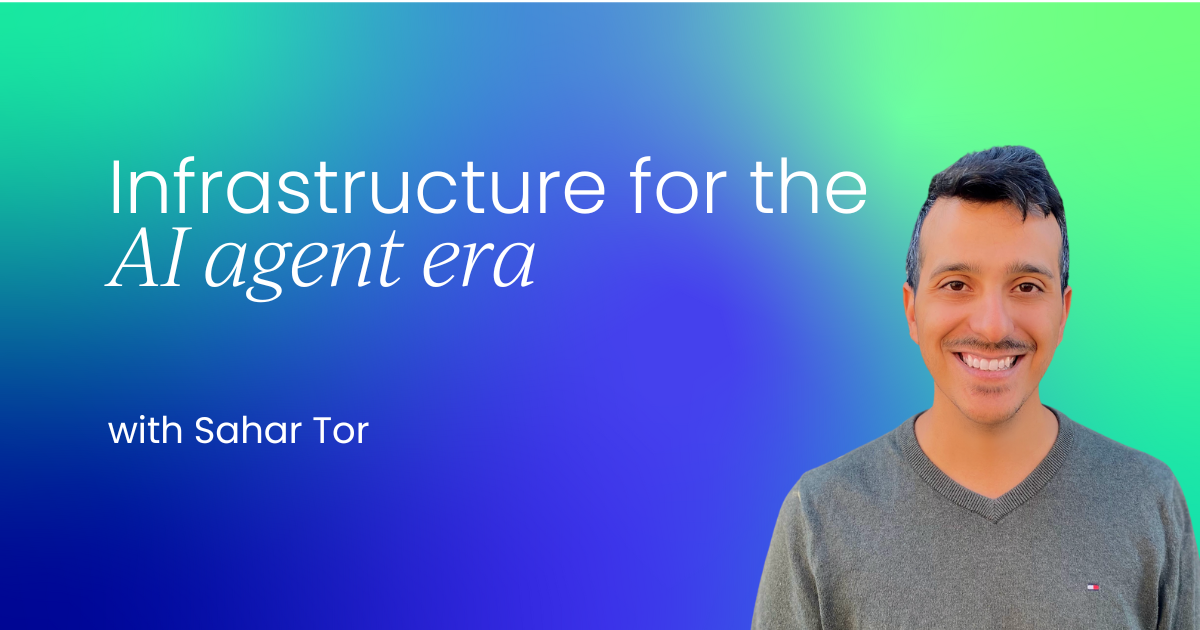
4. How AI enhances execution and GTM strategy
Smarter pipeline management
AI can streamline pipeline visibility and improve forecast reliability through:
- Collaborative pipeline reviews with finance and sales using AI-generated risk scores and close probabilities.
- Analysis of competitor dynamics and market share shifts at the product and geo level to understand how winning or losing specific deals affects strategic positioning.
- Enhanced understanding of how pipeline outcomes impact both profitability and long-term growth trajectories.
Improved sales productivity
AI boosts front-line efficiency by guiding sales teams to focus efforts on the right product segments expected to experience a surge in demand (such as those driven by OS refresh cycles, compliance deadlines, or emerging industry triggers), enabling them to strategically capture growth opportunities.
AI also helps to prioritize accounts while providing accurate bundling suggestions based on buyer profiles and sales history to increase deal size and win rates.
Tighter finance-sales alignment
AI serves as a bridge between strategic planning and operational execution by:
- Providing shared insights to drive collaboration between FP&A, GTM, and sales teams.
- Enabling joint decision-making based on real-time financial and sales data.
- Improving coordination between business units through unified performance metrics.
- Reducing misalignment and strategic blind spots across planning cycles.
5. Key considerations for implementation
- Data readiness: Clean, structured data is critical. Integrating CRM, ERP, and planning systems improves AI effectiveness.
- Human oversight: AI augments, not replaces, finance leadership. Human intuition is still key for context and judgment.
- Change management: Teams need training and adoption support to fully leverage AI’s potential.
Conclusion
AI is redefining how enterprise tech companies forecast, plan, and execute. From lead targeting to revenue modeling and cross-functional scenario planning, it brings precision, agility, and alignment to financial operations.
By breaking silos and enabling real-time collaboration across finance, GTM, and sales, AI turns forecasting into a growth engine. Companies that embed AI into their processes will be better positioned to anticipate market shifts, improve profitability, and lead with confidence.
*Disclaimer: The views expressed in this article are my own and do not reflect the official policy or position of any organization. *
How generative AI is revolutionizing drug discovery and developmentHow generative AI is revolutionizing drug discovery and development
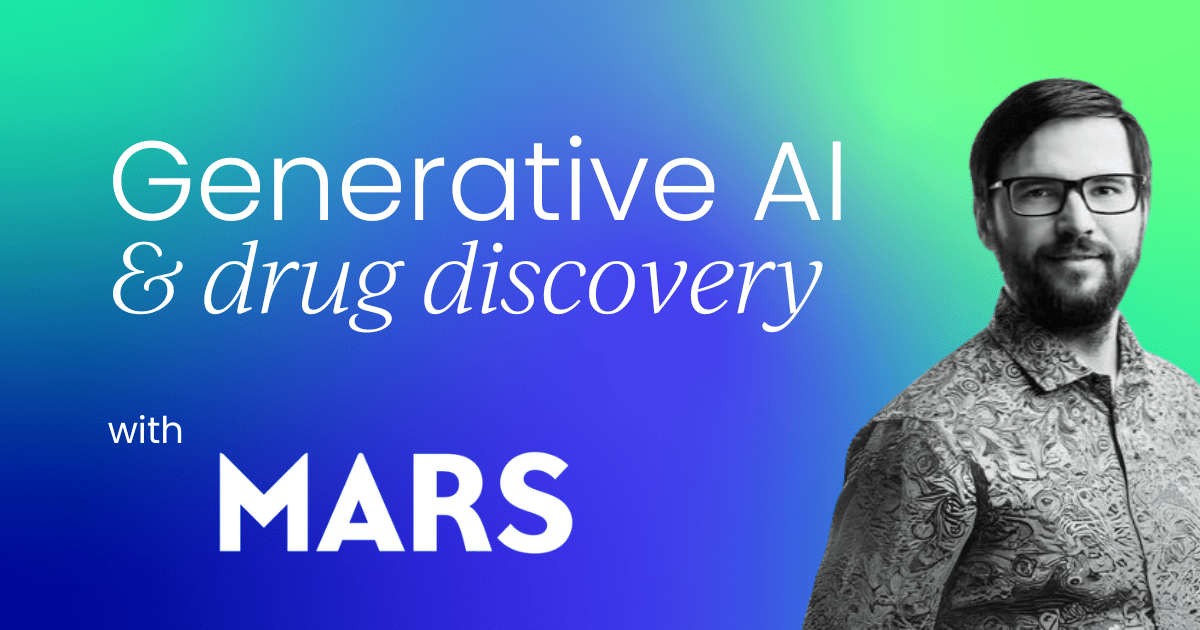
This article comes from Dr Nikolay Burlutskiy’s talk at our London 2024 Generative AI Summit. Check out his full presentation and the wealth of OnDemand resources waiting for you.
Nikolay is currently the Senior Manager of GenAI Platforms at Mars
Have you ever wondered just how long it takes to bring a new medicine to market? For those of us working in the pharmaceutical industry, the answer is clear: it can take decades and cost billions. As a computer scientist leading the AI team at AstraZeneca, I’ve seen firsthand just how complicated the drug discovery process is.
Trust me, there’s a lot of work that goes into developing a drug. But the real challenge lies in making the process more efficient and accessible, which is where generative AI comes in.
In this article, I’ll walk you through the critical role that AI plays in accelerating drug discovery, particularly in areas like medical imaging, predicting patient outcomes, and creating synthetic data to address data scarcity. While AI has incredible potential, it’s not without its challenges. From building trust with pathologists to navigating regulatory requirements, there’s a lot to consider.
So, let’s dive into how AI is reshaping the way we approach drug discovery and development – and why it matters to the future of healthcare.
Generative AI’s role in enhancing medical imaging
One of the most powerful applications of generative AI in drug development is its ability to analyze medical images – a process that’s essential for diagnosing diseases like cancer, which can be difficult to detect early on.
In the world of pathology, we’re increasingly moving away from using traditional microscopes, and using digital images instead. With digitized tissue biopsies, we now have access to incredibly detailed scans that show every single cell. The sheer volume of this data – sometimes containing over 100,000 x 100,000 pixels – makes it almost impossible for human pathologists to analyze every single detail, but AI can handle this level of complexity.
At AstraZeneca, we’ve been using generative AI to help analyze these vast datasets. One of the most exciting developments is in medical imaging, where AI models can quickly identify cancerous cells, segment different areas of tissue, and even predict patient outcomes.
For example, AI can help predict whether a patient will respond to a specific drug – information that’s invaluable for companies like ours, as we work to develop treatments that will provide real, tangible benefits for patients.
In my work, we leverage powerful AI techniques such as variational autoencoders and generative adversarial networks (GANs) to build these models. These AI techniques can help us learn from medical images and generate synthetic data that can be used to train AI models more effectively.

AI agent infra, Gemini 2.5, 1-bit LLM: This week’s top 5AI agent infra, Gemini 2.5, 1-bit LLM: This week’s top 5
Welcome to AI Circuit, in April’s edition:
- The great web rebuild: Infrastructure for the AI agent era
- Meet Gemini 2.5 Flash: Fast, smart, and fully tunable
- AIOps in action: AI & automation transforming IT operations
- Microsoft’s 1-bit LLM is fast, tiny, and open source
- How to 8‑bit quantize large models using bits and bytes
Reading time: 4 minutes
The great web rebuild: Infrastructure for the AI agent era
Booking flights. Comparing prices. Managing data privacy.
In 2028, your AI agent does it all without hitting a single CAPTCHA or fraud alert.
The secret? Agent passports: cryptographic credentials that prove delegation, set spending limits, and unlock seamless agent-to-agent coordination.
We’re entering the agent-first internet, where human-era systems (CAPTCHAs, review sites, IP throttling) break down, and new infrastructure rises to support fully autonomous assistants.
What’s changing?
- Identity: agents verify delegation, not humanity
- Privacy: agents manage granular data permissions in real time
- Trust: star ratings are out, verifiable metrics are in
- Security: new attack surfaces, new protections
The takeaway? The next internet runs on agents. And whoever builds the infrastructure? Wins.
Meet Gemini 2.5 Flash: Fast, smart, and fully tunable
Google just dropped Gemini 2.5 Flash. An accelerated, cost-efficient model with a twist: you control how much it thinks.
It’s the first hybrid reasoning model:
- Turn thinking on/off depending on your use case
- Set a thinking budget to balance speed, quality, and cost
- Keep Flash-fast responses with smarter performance
Even with reasoning disabled, 2.5 Flash outperforms its predecessor and crushes the price-to-performance curve.
Need deep logic for tough prompts? Crank up the budget.
Just want speed? Set it to zero. Either way, you’re in control.
The takeaway? Fast is table stakes. Controllable reasoning is the future.
1. Today (April 24), discover how prompt injection attacks are putting generative AI at risk and the defenses you need to stay ahead in our live session, Words as Weapons.
2. How to balance helpfulness and harmlessness in AI
3. AWS, Anthropic, and Glean unpack how enterprises can scale AI smartly with agentic tech, rock-solid security, and real ROI on May 6
AIOps in action: AI & automation transforming IT operations
Traditional IT ops are slow, reactive, and overloaded.
By using AI to monitor, analyze, and resolve issues in real-time, AIOps delivers:
- Predictive maintenance that prevents outages
- Automated incident response that slashes downtime
- Root cause analysis with zero guesswork
- Scalable automation that frees up IT teams
One bank cut time to detect by 35 percent and resolve by 43 percent using AIOps.
The takeaway? AI isn’t just streamlining IT: it’s making it self-healing.
Microsoft’s 1-bit LLM is fast, tiny, and open source
Meet BitNet b1.58 2B4T: Microsoft’s ultra-efficient, open-source LLM that runs on just 400MB of memory.
How? It uses only -1, 0, and 1 for full-precision weights, making it ideal for low-power devices like phones and edge hardware.
Trained on 4T tokens, it punches way above its bit-size on:
- Language tasks
- Math reasoning
- Coding
- Conversations
And it’s not just small; it’s free on Hugging Face.
The takeaway? LLMs don’t have to be massive to be mighty. BitNet proves it.
> View the full 2025 event calendar and network with AI experts.
> LLMOps Landscape Survey – 5 minutes helps shape the industry
How to 8‑bit quantize large models using bits and bytes
Massive models, massive problems: until you quantize.
8-bit quantization shrinks model size, reduces memory usage, and boosts speed, all with minimal loss of accuracy.
Here’s what it unlocks:
- 75 percent memory savings
- Faster inference on CPUs, GPUs, edge devices
- Energy-efficient deployment
- No major code changes with tools like BitsAndBytes
A real-world example is IBM Granite: 2B parameters, now edge-ready with a single config flag.
The takeaway? Quantization is the quiet revolution powering real-world AI.
OnDemand:
Generative AI Summit Washington, D.C.
Generative AI Summit Austin
Generative AI Summit Toronto
Computer Vision Summit London
Exclusive articles:
The truth about enterprise AI agents (and how to get value from them)
How to secure LLMs with the fastest guardrails for peak AI performance
GenAI creation: Building for cross-platform wearable AI and mobile experiences
Building advanced AI systems: Challenges and best practices
You’re currently an Insider member. Upgrade to Pro+ to access all this every month, plus a complimentary in-person ticket, and members’ events.
Spread the word about your brand, acquire new customers, and grow revenue.
Engage AIAI’s core audience of engineers, builders, and executives across 25+ countries spanning North America, Asia, and EMEA.
Message Jordan to discuss and partner with us.
The great web rebuild: Infrastructure for the AI agent eraThe great web rebuild: Infrastructure for the AI agent era

It’s December 2028. Sarah’s AI agent encounters an unusual situation while booking her family’s holiday trip to Japan. The multi-leg journey requires coordinating with three different airlines, two hotels, and a local tour operator.
As the agent begins negotiations, it presents its “agent passport”—a cryptographic attestation of its delegation rights and transaction history. The vendors’ systems instantly verify the agent’s authorization scope, spending limits, and exposed metadata like age and passport number.
Within seconds, the agent has established secure payment channels and begun orchestrating the complex booking sequence. When one airline’s system flags the rapid sequence of international bookings as suspicious, the agent smoothly provides additional verification, demonstrating its legitimate delegation chain back to Sarah.
What would have triggered fraud alerts and CAPTCHA challenges in 2024 now flows seamlessly in an infrastructure built for autonomous AI agents.
—> The future, four years from now.
In my previous essay, we explored how websites and applications must evolve to accommodate AI agents. Now we turn to the deeper infrastructural shifts that make such agent interactions possible.
The systems we’ve relied on for decades: CAPTCHAs, credit card verification, review platforms, and authentication protocols, were all built with human actors in mind. As AI agents transition from experimental curiosities to fully operational assistants, the mechanisms underpinning the digital world for decades are beginning to crack under the pressure of automation.
The transition to an agent-first internet won’t just streamline existing processes—it will unlock entirely new possibilities that were impractical in a human-centric web. Tasks that humans find too tedious or time-consuming become effortless through automation.
Instead of clicking ‘Accept All’ on cookie banners, agents can granularly optimize privacy preferences across thousands of sites. Rather than abandoning a cart due to complex shipping calculations, agents can simultaneously compare multiple courier services and customs implications.
Even seemingly simple tasks like comparing prices across multiple vendors, which humans typically limit to 2-3 sites, can be executed across hundreds of retailers in seconds. Perhaps most importantly, agents can maintain persistent relationships with services, continuously monitoring for price drops, policy changes, or relevant updates that humans would miss.
This shift from manual, limited interactions to automated, comprehensive engagement represents not just a change in speed, but a fundamental expansion of what’s possible online.
Amid these sweeping changes, a new gold rush is emerging. Just as the shift to mobile created opportunities for companies like Uber and Instagram to reinvent existing services, the transition to agent-first infrastructure opens unprecedented possibilities for founders.
From building next-generation authentication systems and trust protocols to creating agent-mediated data marketplaces, entrepreneurs have a chance to establish the foundational layers of this new paradigm. In many ways, we’re returning to the internet’s early days, where core infrastructure is being reimagined from the ground up—this time for an autonomous, agent-driven future.
In this second post of the AI Agents series, we’ll focus on the foundational infrastructure changes that underlie the agent-first internet: new authentication mechanisms, trust systems, novel security challenges, and agent-to-agent protocols, setting the stage for the more commerce-oriented transformations we’ll explore in the following post.
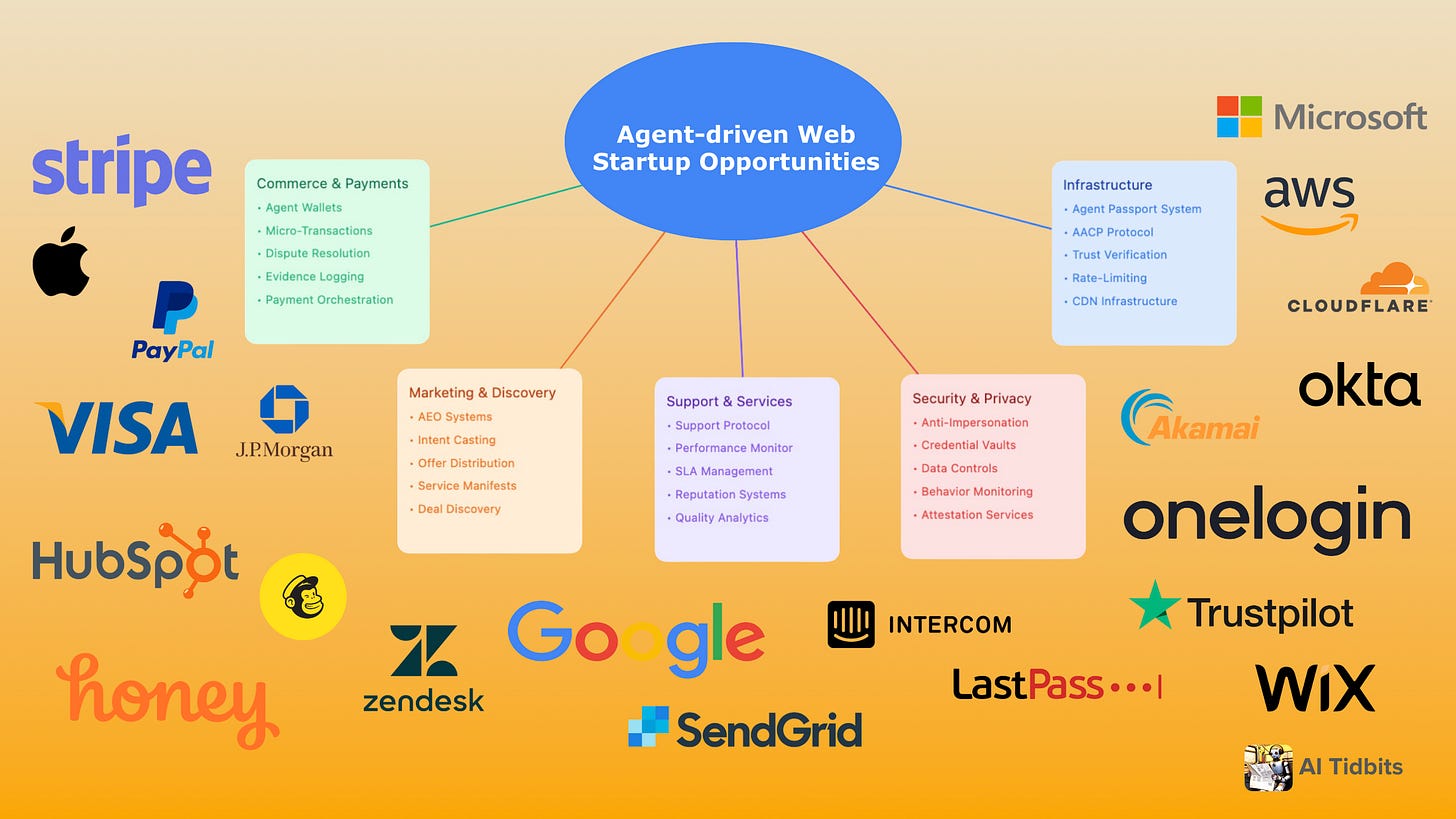
This article was originally published here at AI Tidbits, where you can read more of Sahar’s fascinating perspectives on AI-related topics.
Proving you’re a human an agent
Remember when “proving you’re not a robot” meant deciphering distorted text or selecting crosswalk images? Those mechanisms become obsolete in a world where legitimate automated actors are the norm rather than the exception.
Today’s CAPTCHAs, designed to block bots, have become increasingly complex due to advances in multimodal AI. Paradoxically, these mechanisms now hinder real humans while sophisticated bots often bypass them. As AI outpaces human problem-solving in these domains, CAPTCHAs risk becoming obsolete, reducing website conversions, and frustrating legitimate users.
The challenge shifts from proving humanity to verifying the agent has been legitimately delegated and authorized by a human user.
![challenging captcha.mp4 [video-to-gif output image] The great web rebuild: Infrastructure for the AI agent era](https://substackcdn.com/image/fetch/w_1456,c_limit,f_auto,q_auto:good,fl_lossy/https%3A%2F%2Fsubstack-post-media.s3.amazonaws.com%2Fpublic%2Fimages%2Ffe08711a-4f10-42d0-98cb-b25015516fab_800x692.gif)
Today’s rate-limiting mechanisms assume human-paced interactions, relying heavily on IP-based throttling to manage access. But in a world of AI agents, what constitutes “fair use” of digital services? In an agent-driven internet, automated browsing will become not just accepted but essential. Cloudflare, Akamai, and similar services will need to pivot from simplistic IP-based throttling to sophisticated agent-aware frameworks.
As businesses grapple with these challenges, a new solution is emerging—one that shifts the paradigm from blocking automated traffic to authenticating and managing it intelligently. Enter the Agent Passport.
Imagine a digital credential that encapsulates an agent’s identity and permissions—cryptographically secured and universally recognized. Unlike simple API keys or OAuth tokens, these passports maintain a verifiable chain of trust from the agent back to its human principal. They carry rich metadata about permissions scope, spending limits, and authorized behaviors, allowing services to make nuanced decisions about agent access and capabilities.
By integrating Agent Passports, business websites like airlines can distinguish between legitimate, authorized agents and malicious actors. New metrics, such as agent reliability scores and behavioral analysis, could ensure fair access while mitigating abuse, balancing security with the need to allow agent-driven traffic.
Authentication mechanisms, such as signing up and signing in, must also evolve for an agent-first internet. Websites will need to determine not just an agent’s identity but also its authorized scope—what data the agent is authorized to access (‘read’) and what actions it is permitted to execute (‘write’).
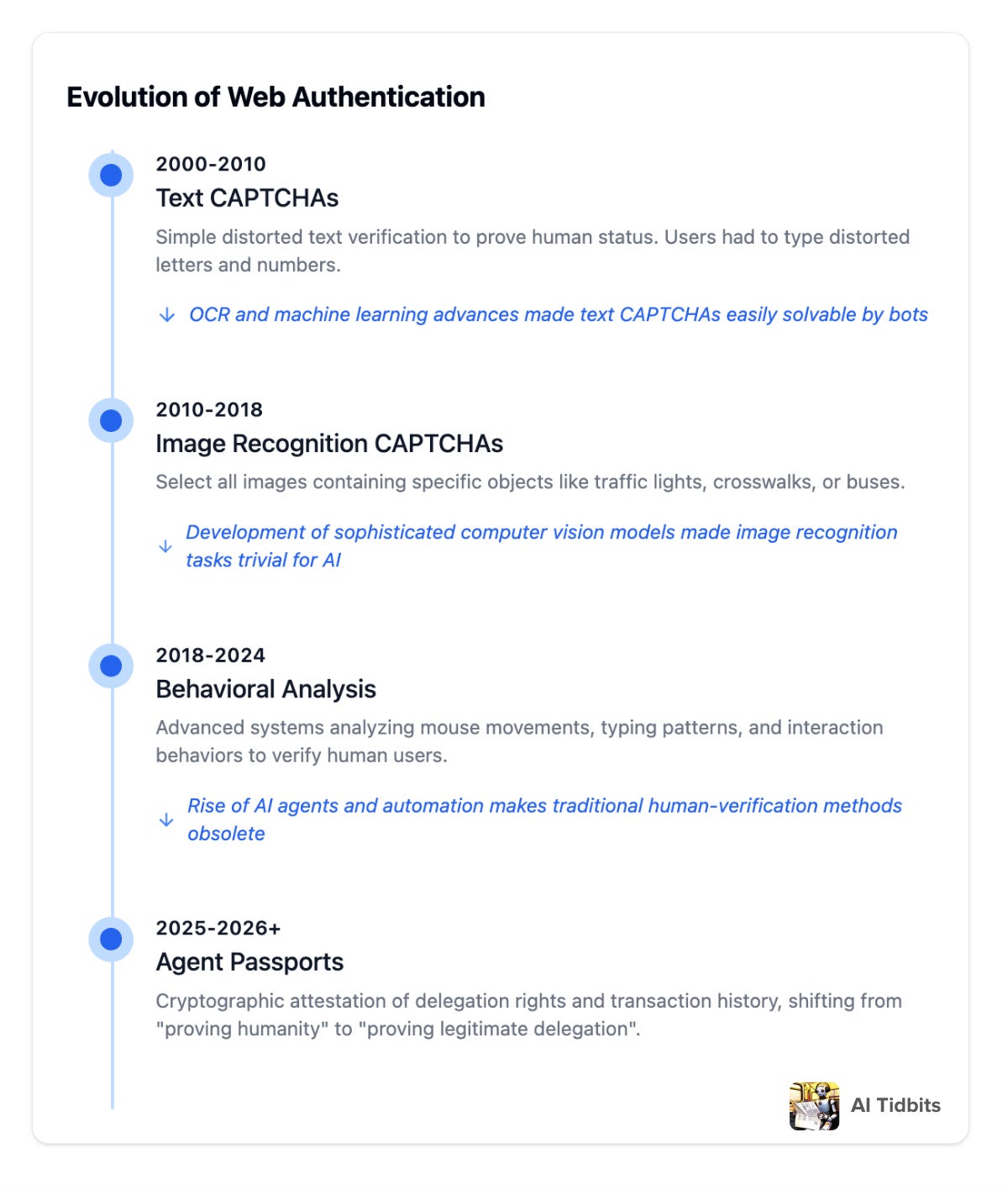
Google Login revolutionized online authentication by centralizing access with a single credential, reducing friction and enhancing security. Similarly, agent passports could create a universal standard for agent authentication, simplifying multi-platform access while maintaining robust authorization controls.
Companies like Auth0 and Okta could adapt by offering agent-specific identity frameworks, enabling seamless integration of these passports into their authentication platforms. Meanwhile, consumer companies like Google and Apple could extend their authentication and wallet services to seamlessly support agent-mediated interactions, bridging the gap between human and agent use cases.
A new protocol for Agent-to-Agent communication
In the early days of the web, protocols like HTTP emerged to standardize how browsers and servers communicated. In much the same way, the rise of agent-mediated interactions demands a new foundational layer: an Agent-to-Agent Communication Protocol (AACP). This protocol would formalize how consumer agents and business agents discover each other’s capabilities, authenticate identities, negotiate trust parameters, and exchange actionable data—all while ensuring both parties operate within well-defined boundaries.
Just as Sarah’s travel agent from the intro paragraph seamlessly coordinated with multiple airlines and hotels, AACP enables complex multi-party interactions that would be tedious or impossible for humans to manage manually.
Much like HTTPS introduced encryption and certificates to authenticate servers and protect user data, AACP would implement cryptographic attestation for agents. Trusted third-party authorities, similar to today’s certificate authorities, would issue digital “agent certificates” confirming an agent’s legitimacy, delegation chain, and operational scope. This ensures that when a consumer’s travel-planning agent communicates with an airline’s booking agent, both sides can instantly verify authenticity and adherence to agreed-upon standards.
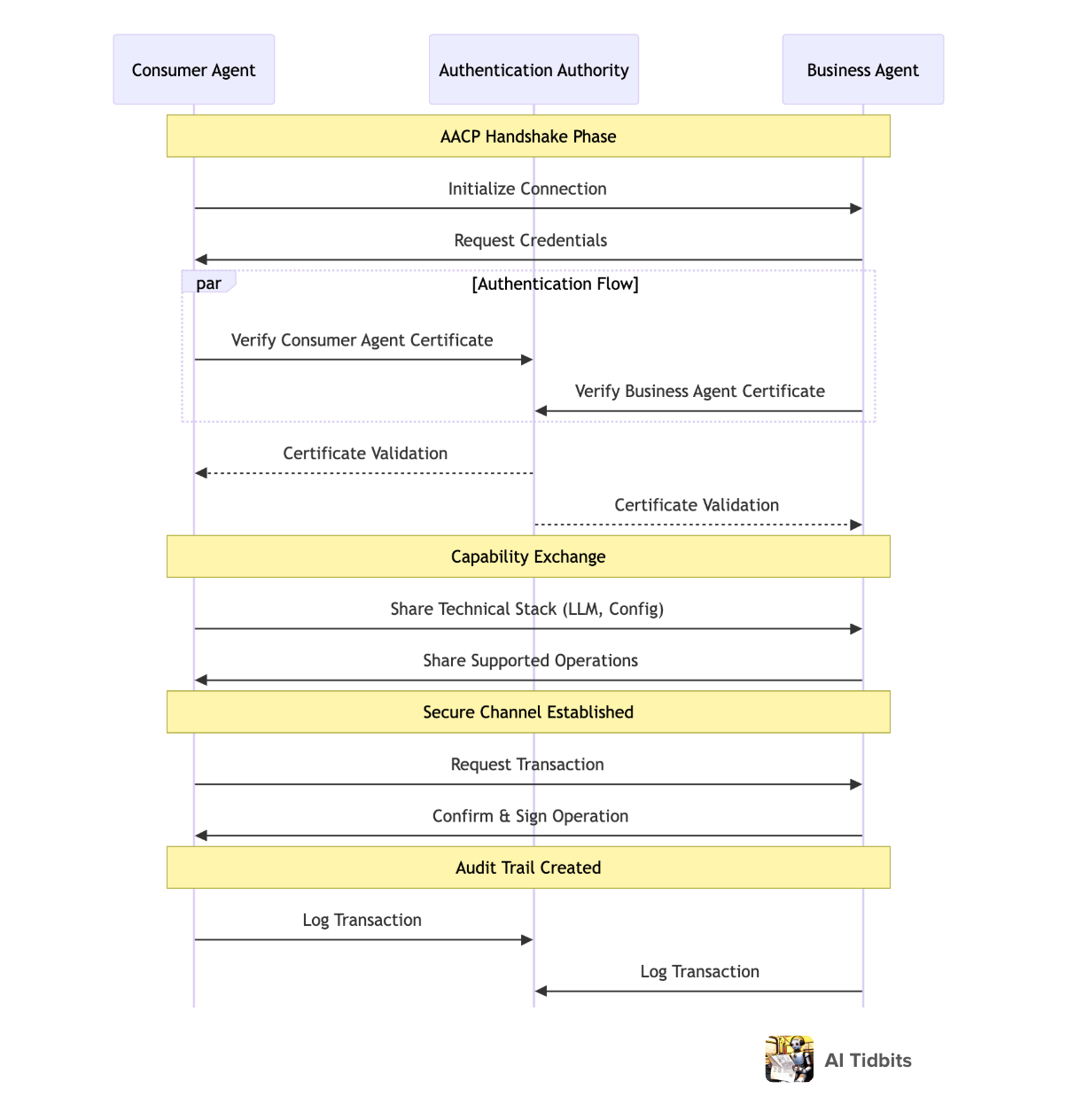
Without such a protocol, a rogue agent might impersonate a trusted retailer to trick consumer agents into unauthorized transactions, or a malicious consumer agent could spoof credentials to overwhelm a merchant’s infrastructure. By mandating cryptographic proof, robust authentication handshakes, and behavior logs, AACP mitigates these threats before meaningful data or funds change hands.
The handshake phase in AACP would include mutual disclosure of the agents’ technical stacks—such as which LLM or language configuration they use—and their supported capabilities. Once established, the protocol would also govern “write-like operations” (e.g., initiating a payment or updating account details) by enforcing strict sign-offs with auditable cryptographic signatures. Every action would leave a verifiable trail of authorization that can be reviewed and validated after the fact.
Finally, AACP would incorporate locale and language negotiation at the protocol level. Although agents can translate and interpret content dynamically, specifying a preferred language or locale upfront helps streamline interactions. This new protocol weaves together trust, authentication, and contextual awareness, forging a resilient substrate on which the agent-first internet can reliably function.
Trust and reputation reimagined
When we navigate the internet, our judgment of a website’s credibility hinges on a blend of visual and social cues. We look for secure HTTPS connections, professional design, and familiar branding to assure us that a site is trustworthy. No one wants to input their credit card information on a site that looks like it was built in the early 2000s. User reviews and star ratings on platforms like Trustpilot and G2 further influence our decisions, offering insights drawn from shared human experiences.
Perhaps no aspect of online commerce requires more fundamental reimagining than trust and reputation systems. In an agent-mediated economy, traditional cues for reliability fall short. AI agents can’t interpret visual aesthetics or branding elements–they operate on data, protocols, and cryptographic proofs.
Trust mechanisms must pivot from human perception to machine-readable verifications. For instance, an agent might verify a seller’s identity through cryptographic attestations and assess service quality via automated compliance records, ensuring decisions are based on objective, tamper-proof data. Traditional review platforms like Trustpilot and G2, built around subjective human experiences and star ratings, will also become increasingly obsolete.
The emerging alternative is a new trust infrastructure built on quantifiable, machine-readable metrics. Instead of relying on potentially AI-generated reviews, a problem that has already undermined traditional review systems, agents could assess services using benchmarks like delivery time reliability, system uptime, or refund processing speed—measurable metrics that ensure objective evaluations rather than subjective human reviews.
This could involve decentralized reputation networks where trust is established through cryptographically verified interaction histories and smart contract execution records. Such systems would offer objective assessments of service quality, enabling agents to make informed decisions without relying on potentially biased or manipulated human reviews.
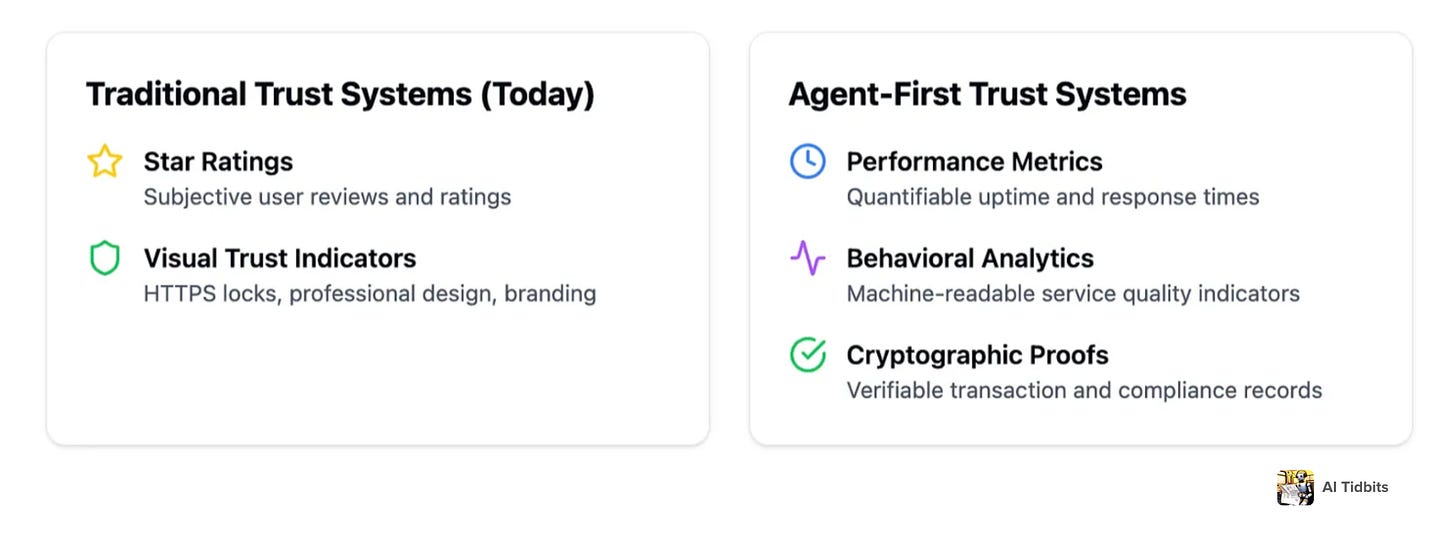
Moreover, the feedback loop between consumers and businesses will evolve dramatically. Instead of sending generic emails requesting reviews—a method often resulting in low response rates—commerce websites can engage directly with your AI agent to collect timely feedback about specific topics like shipping or product quality.
They might offer incentives like future store credit to encourage participation. The human user could provide a brief impression, such as “The cordless vacuum cleaner works well, but the battery life is short.” The agent then takes this input, contextualizes it with additional product data, and generates a comprehensive review that highlights key features and areas for improvement. This process not only saves time for the user but also provides businesses with richer, more actionable insights.
Trustpilot and G2 could pivot by introducing agent-oriented verification systems, such as machine-readable trust scores derived from operational metrics like service accuracy, delivery consistency, and customer support responsiveness, enabling agents to evaluate businesses programmatically.
The new data-sharing economy
Information sharing in the age of AI agents demands a fundamental reinvention of the current consent and data access model. Rather than blunt instruments like cookie banners and privacy policies, websites will implement structured data requirement protocols—machine-readable manifests that explicitly declare what information is needed and why.
This granular control would operate at multiple levels of specificity. For example, an agent could share your shirt size (L) with a retailer while withholding your exact measurements. It might grant 24-hour access to your travel dates, but permanent access to your seating preferences.
When a service requests location data, your agent could share your city for shipping purposes but withhold your exact address until purchase confirmation. These permissions wouldn’t be just binary yes/no choices—they could include sophisticated rules like “share my phone number only during business hours” or “allow access to purchase history solely for personalization, not marketing.”
Such granular controls, impossible to manage manually at scale, become feasible when delegated to AI agents operating under precise constraints.
AI agents would also act as sophisticated information gatekeepers, maintaining encrypted personal data vaults and negotiating data access in real time.
These mechanisms will fundamentally shift the balance of power in data-sharing dynamics. GDPR-like frameworks may evolve to include provisions for dynamic, agent-mediated consent, allowing for more granular data-sharing agreements tailored to specific tasks.
Websites might implement real-time negotiation protocols, where agents can evaluate and respond to data requests based on their principal’s preferences, preserving privacy while optimizing functionality.
New attack vectors
The shift to agent-mediated interaction introduces novel security challenges. Agent impersonation and jailbreaking agents are two examples.
Jailbreaking AI agents poses significant risks, as manipulated agents could act outside their intended scope, leading to unintended purchases or other errors. Techniques like instruction-tuning poisoning or adversarial suffix manipulation could alter an agent’s behavior during critical tasks.
For example, adversarial instructions embedded in websites’ HTML might influence an agent’s purchasing logic, bypassing its human-defined constraints. Robust safeguards and continuous monitoring will be essential to prevent these vulnerabilities.
Agent impersonation adds a complex layer to cybersecurity challenges. Malicious actors could spoof an agent’s credentials to access sensitive data or execute fraudulent transactions. Addressing this threat demands robust multi-layered verification protocols, such as cryptographic identity verification paired with continuous behavioral monitoring, to ensure authenticity and safeguard sensitive interactions.
Building the new web – opportunities for founders
The web’s agent-first future has no established playbook, and that’s exactly where founders thrive. Entirely new product categories are waiting to be defined: agent-to-agent compliance dashboards, cryptographic attestation services that replace outdated CAPTCHAs, and dynamic data-sharing frameworks that make “privacy by design” a reality.
Platforms that offer standardized “agent passports,” identity brokerages that verify delegation rights, agent-native payment gateways, and trust ecosystems driven by machine-readable performance metrics—each of these represents a greenfield opportunity to set the standards of tomorrow’s internet.
Startups anticipating these shifts can position themselves as foundational players in an agent-driven economy, opening new channels of value creation and establishing a competitive edge before the rest of the market catches up.
Some concrete areas include:
- Trustpilot for agents – creating machine-readable trust metrics and reputation systems that help agents evaluate services and vendors
- Okta for AI agents – building the identity and authentication layer that manages agent credentials, permissions, and delegation chains
- OneTrust for agents – creating the new standard for privacy preference management, turning today’s basic cookie banners into sophisticated data-sharing frameworks where agents can negotiate and manage granular permissions across thousands of services
- Cloudflare for agent traffic – developing intelligent rate-limiting and traffic management systems designed for agent-scale operations
- LastPass for agent permissions – building secure vaults that manage agent credentials and access rights across services
- AWS CloudFront for agent data – creating CDN-like infrastructure optimized for agent-readable formats and rapid agent-to-agent communication
- McAfee security for agents – developing security platforms that protect against agent impersonation and novel attack vectors
Go build.
